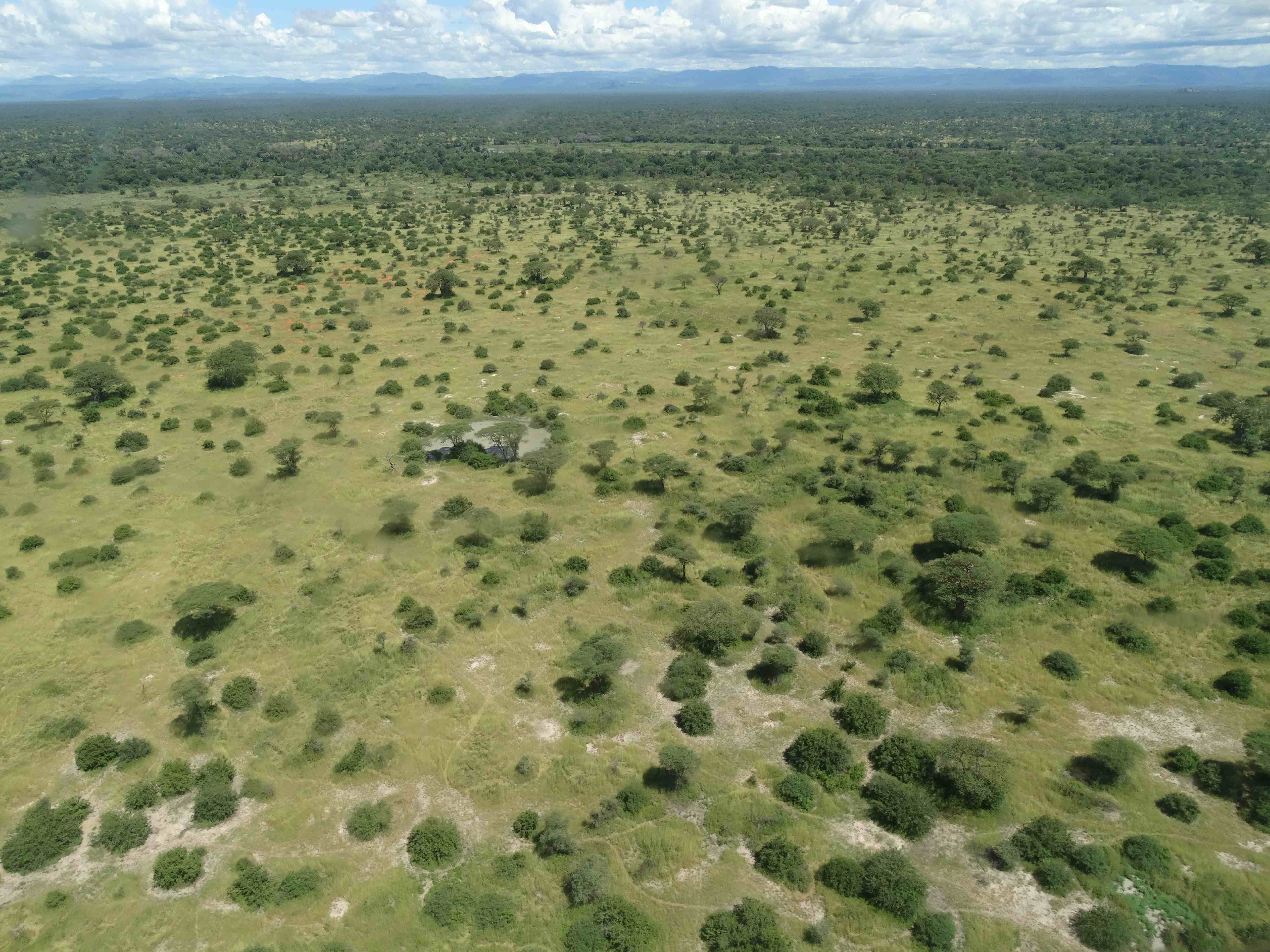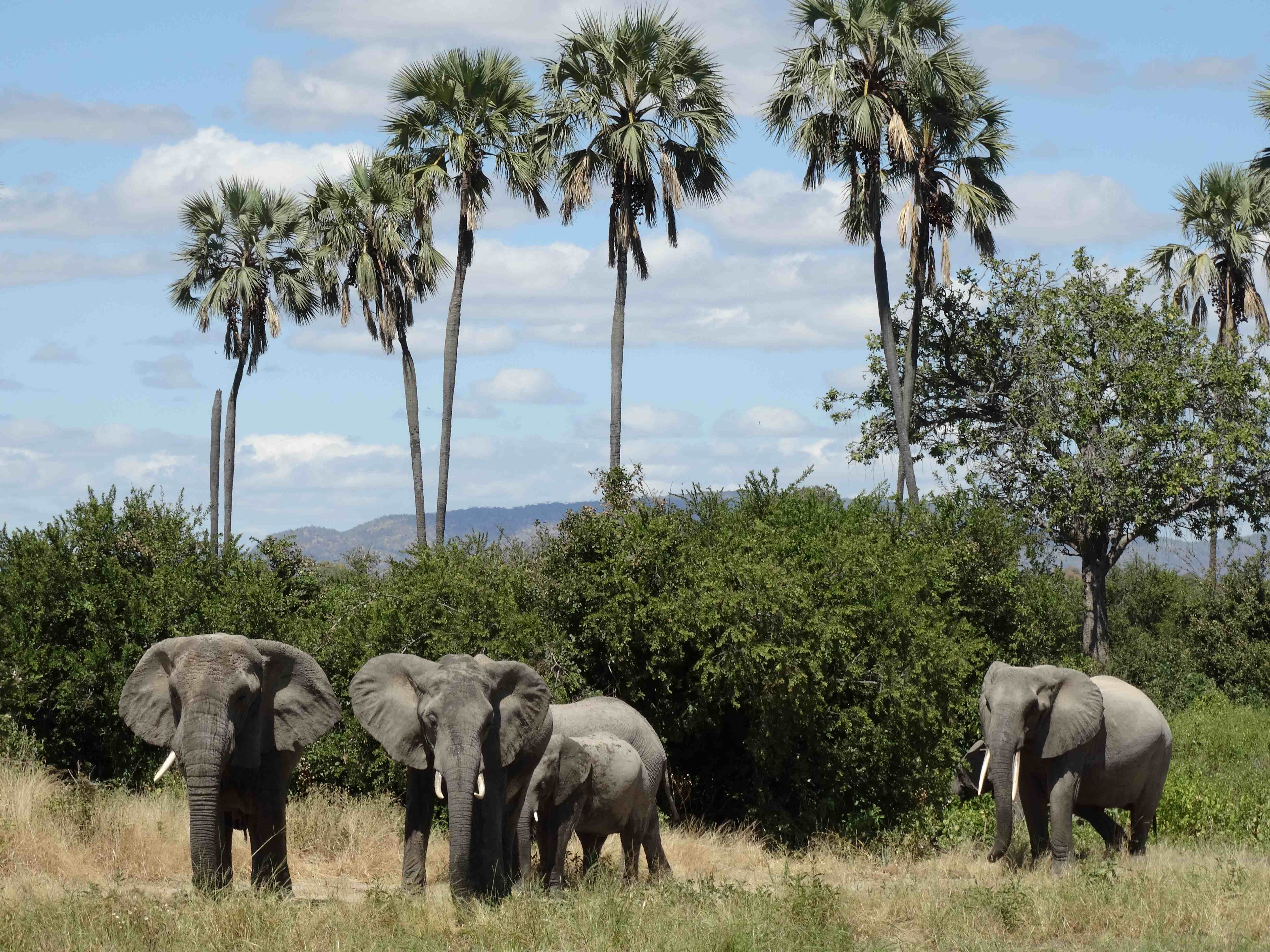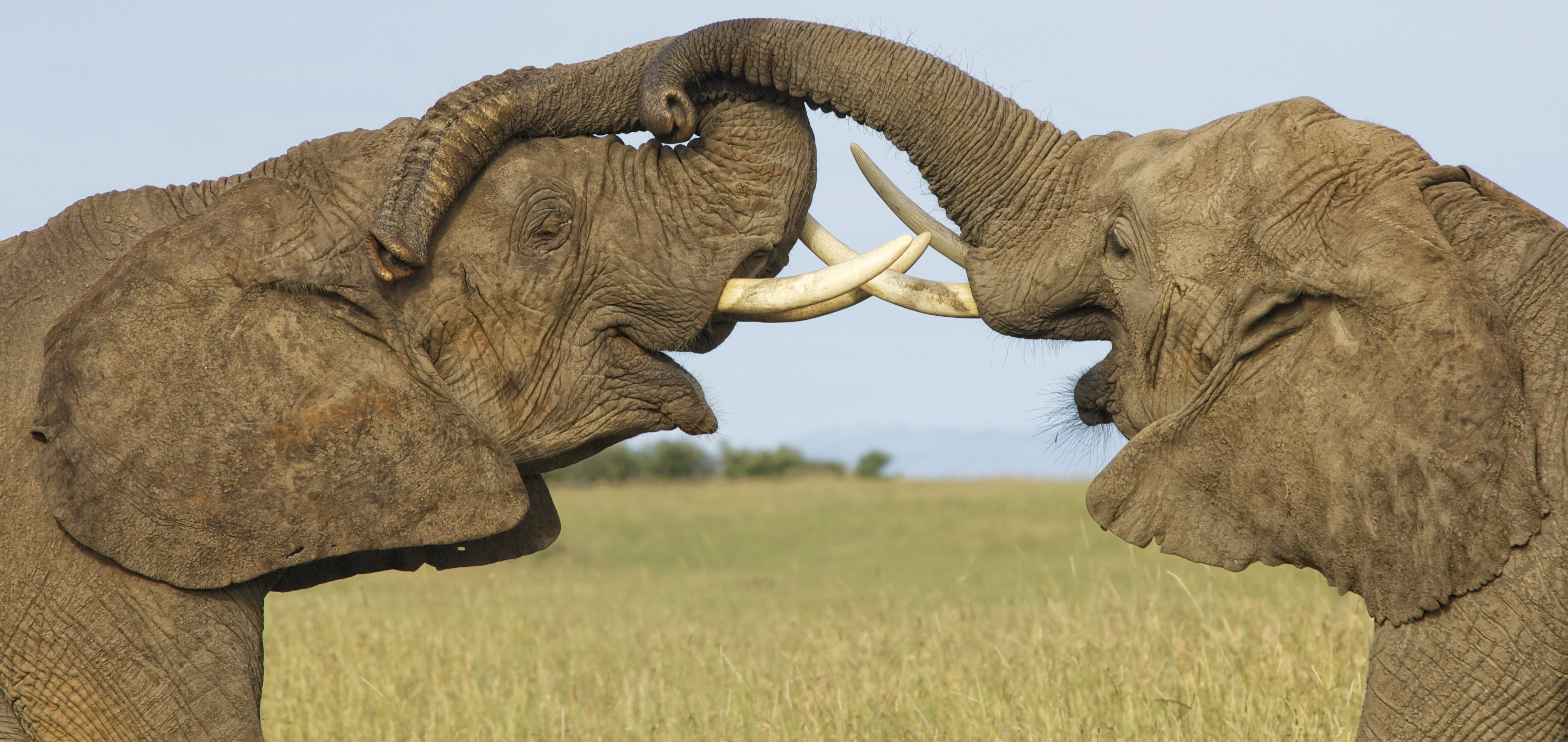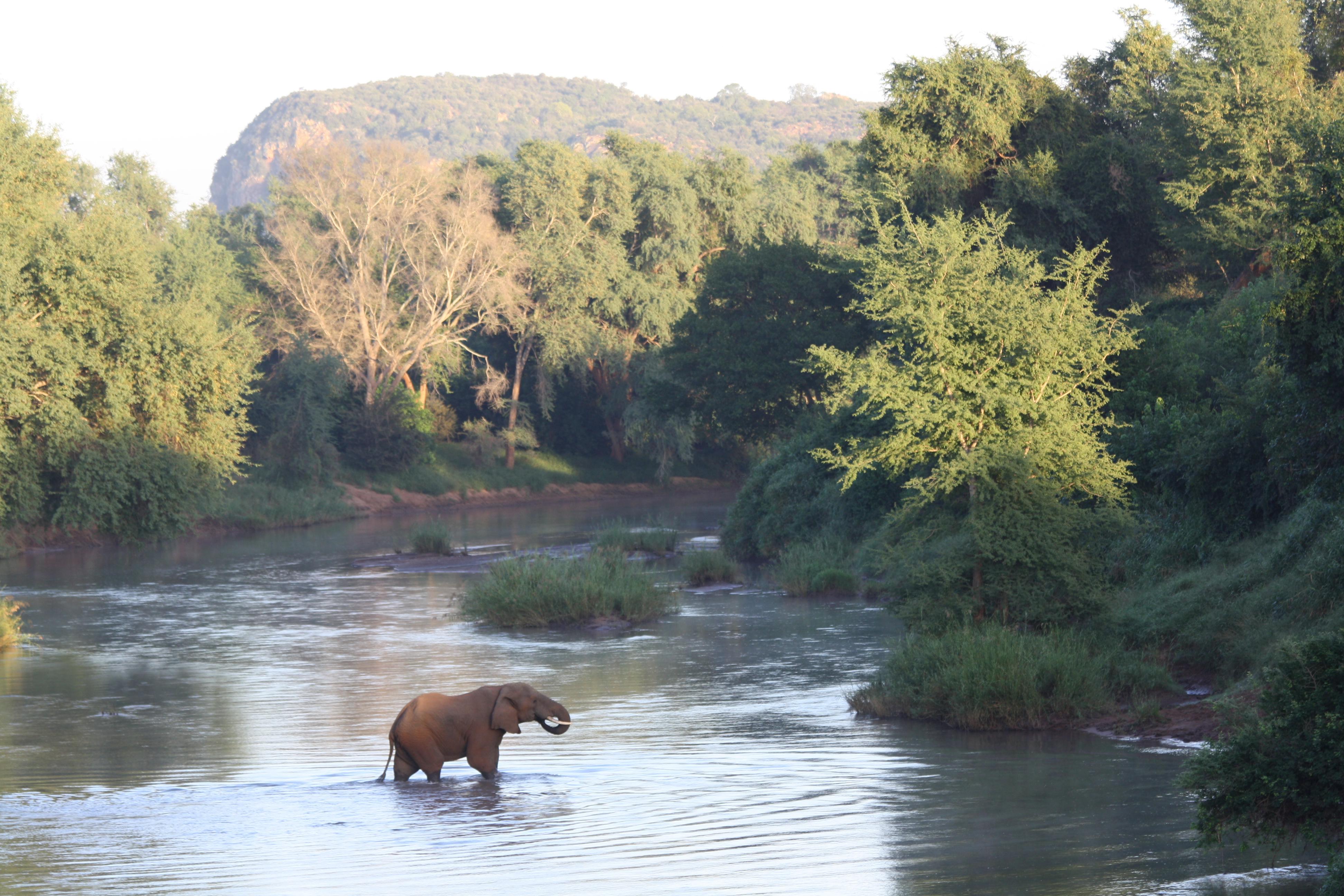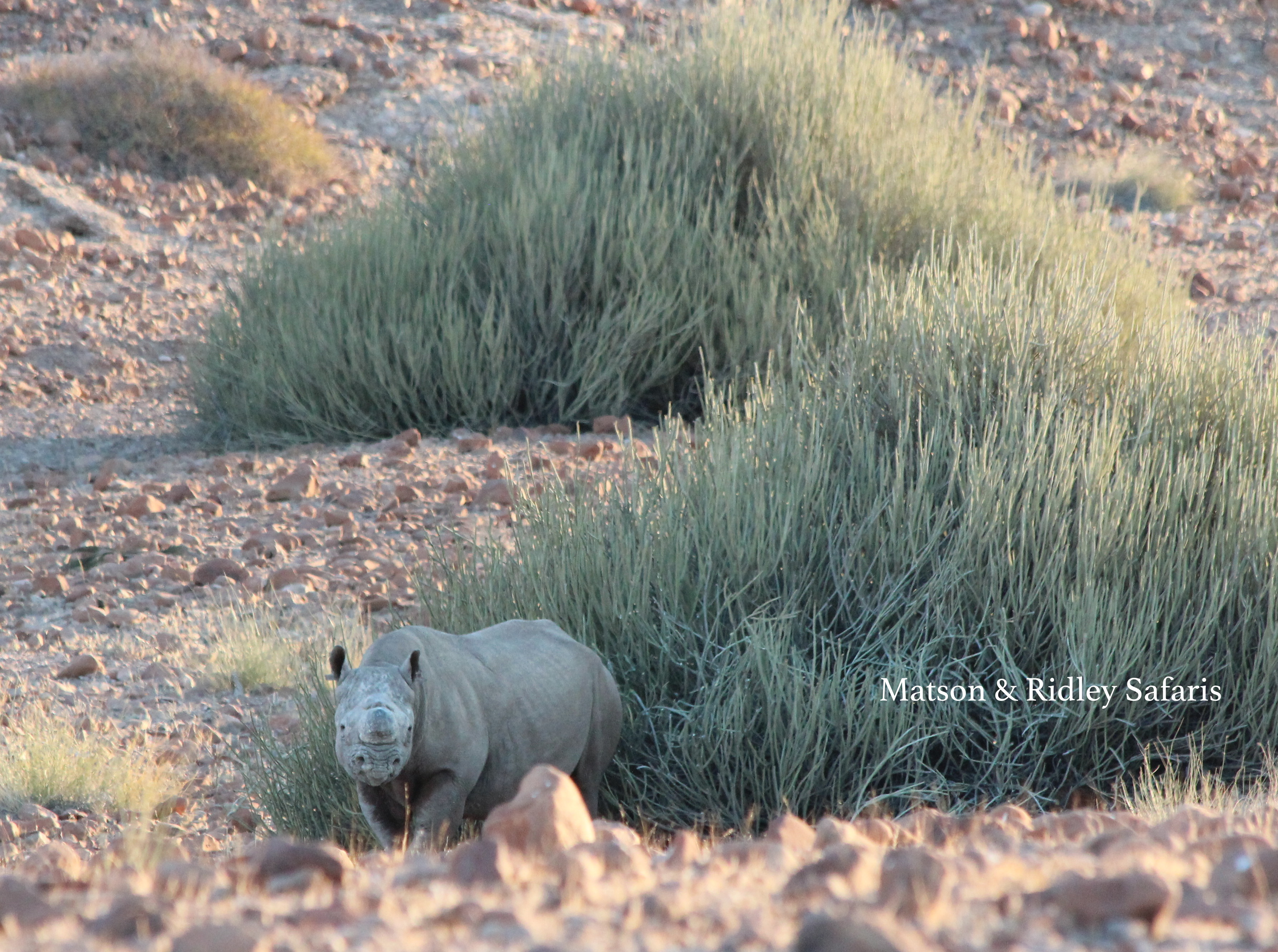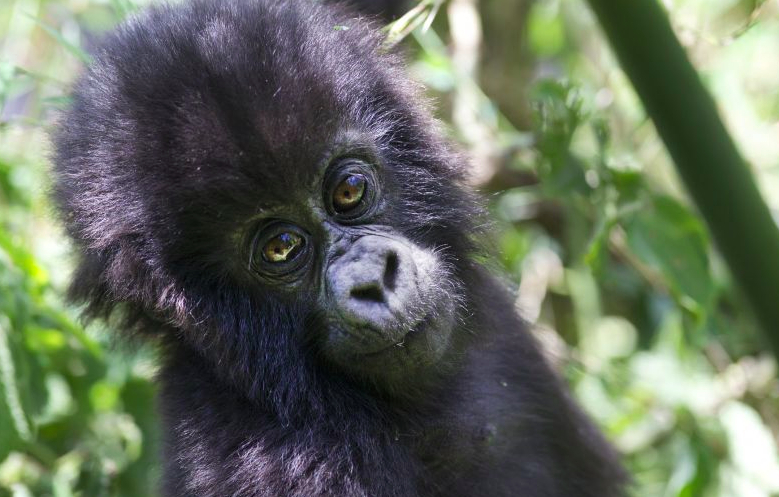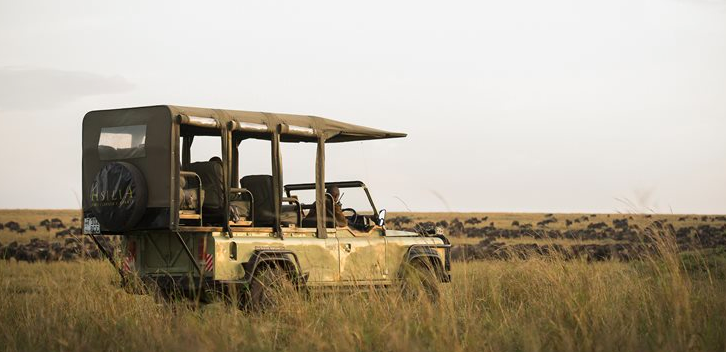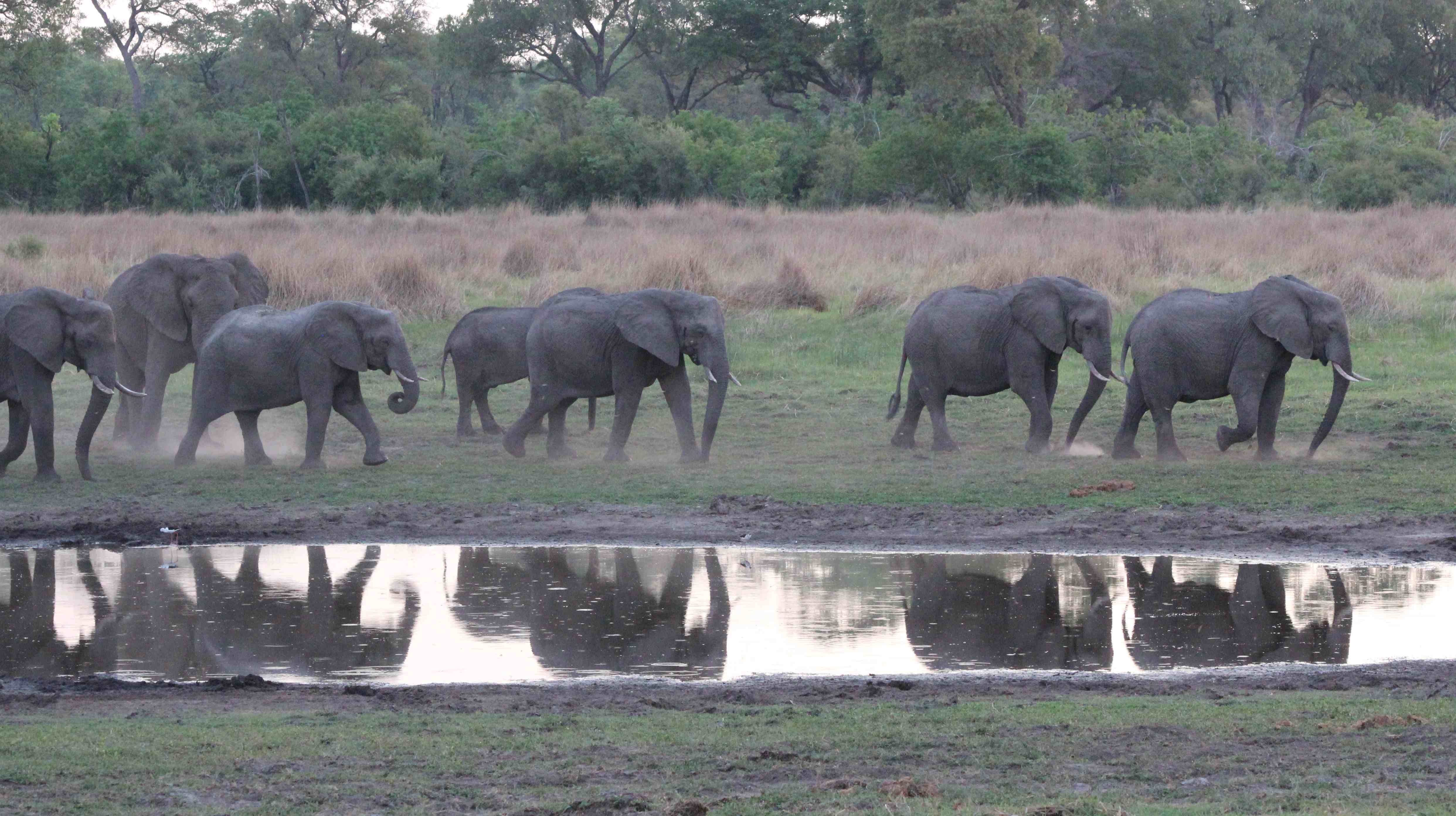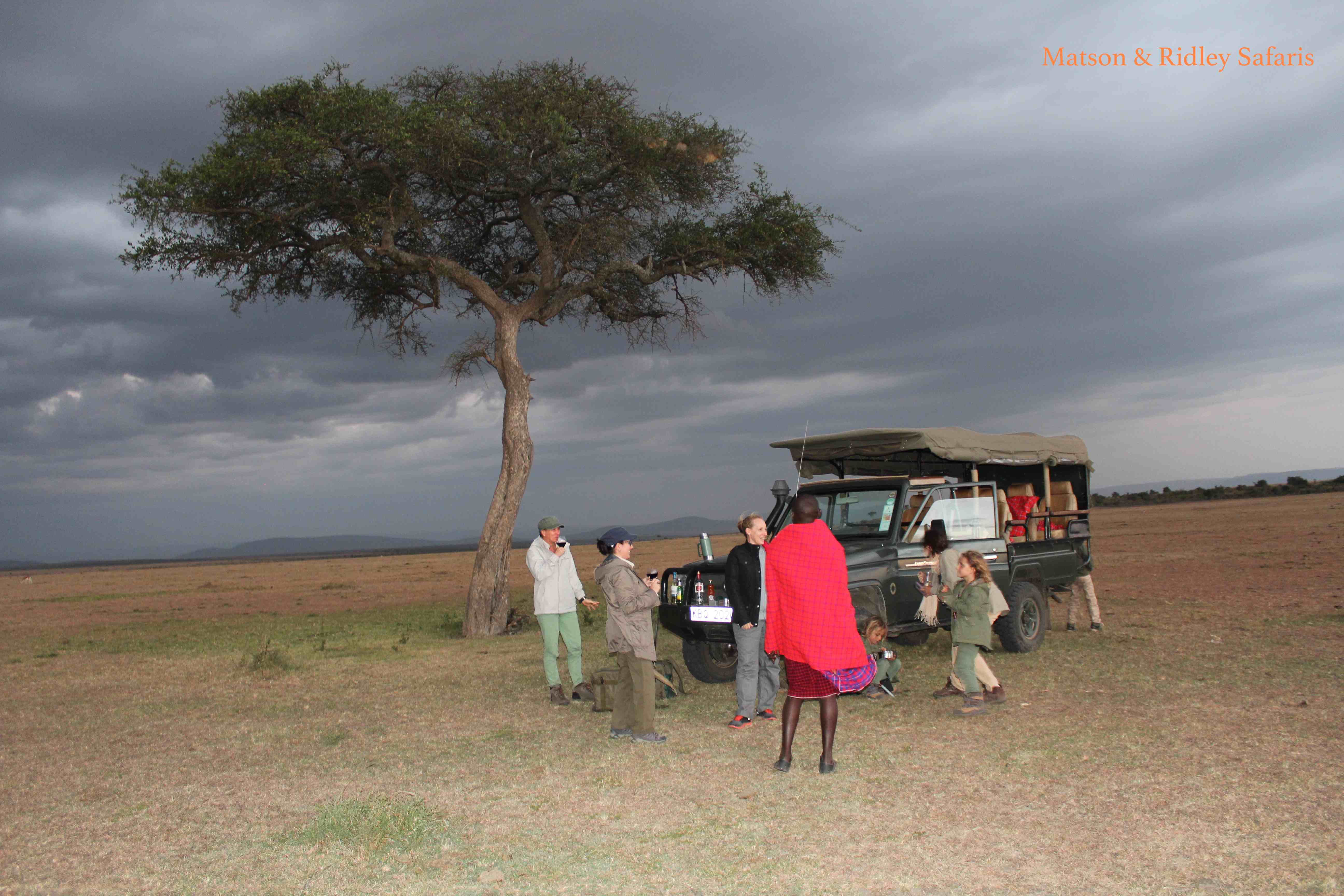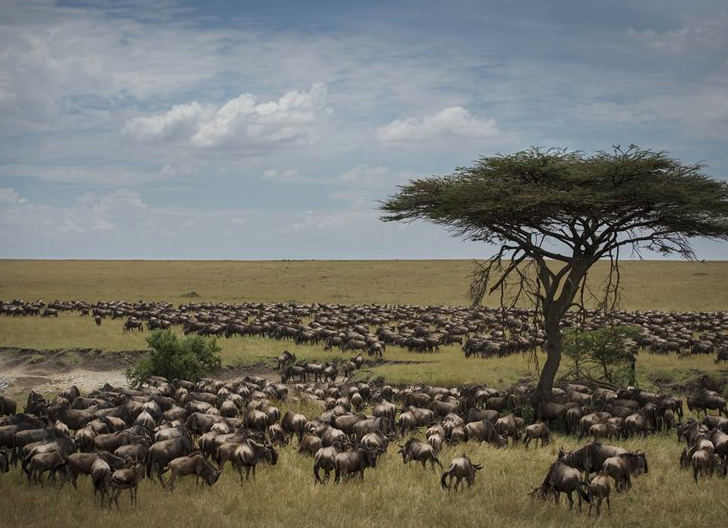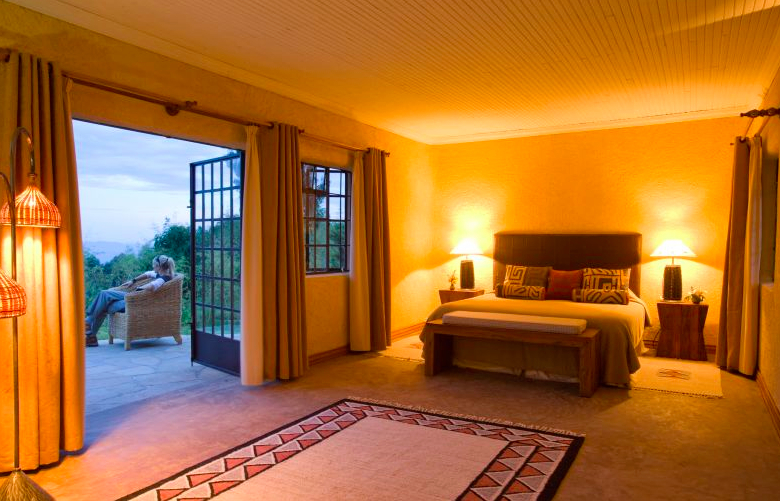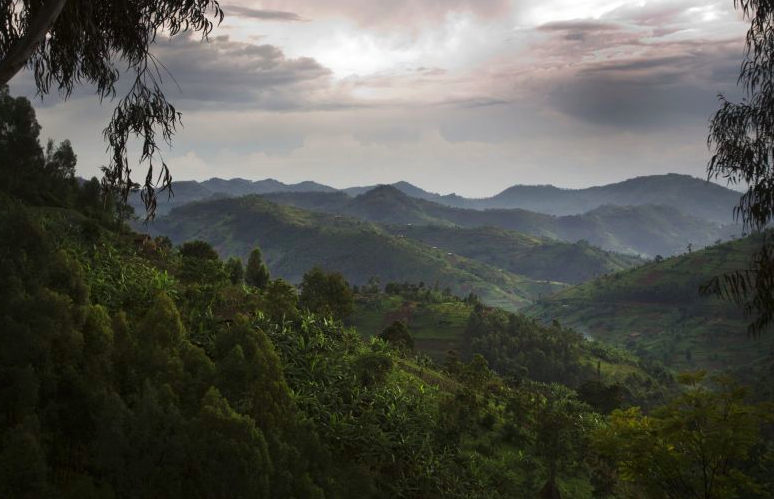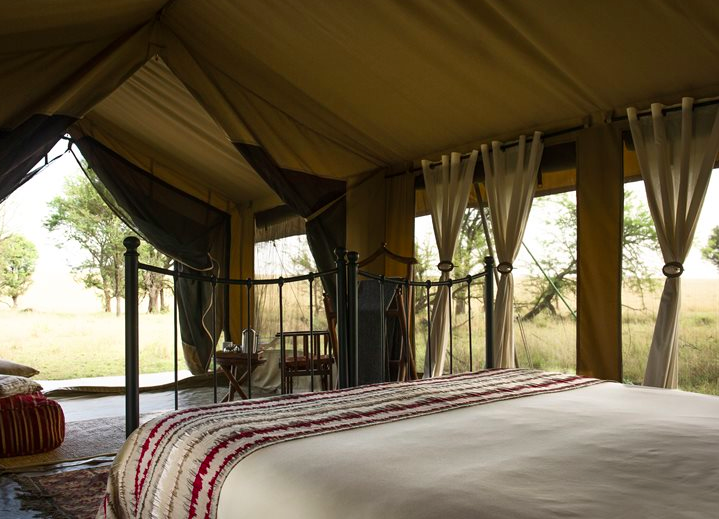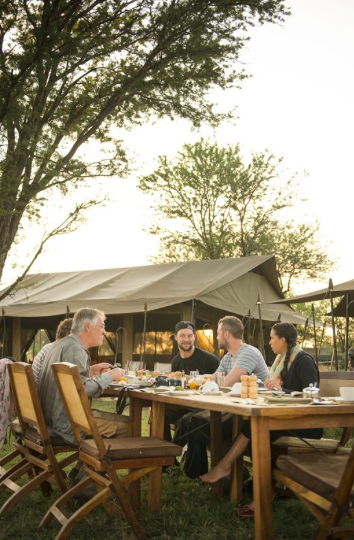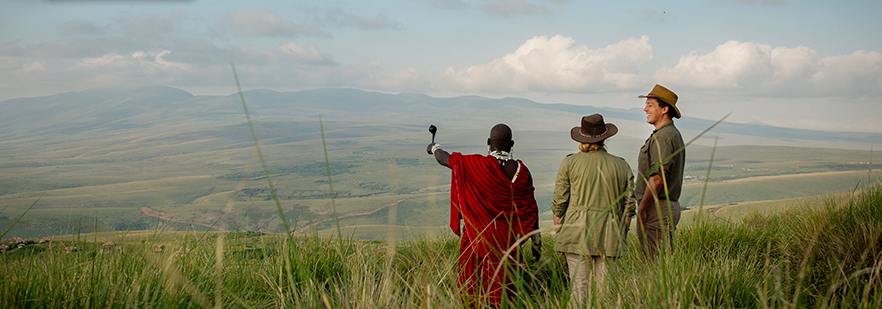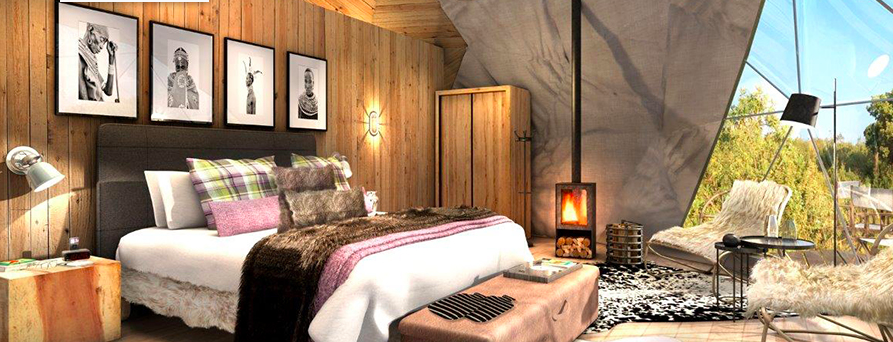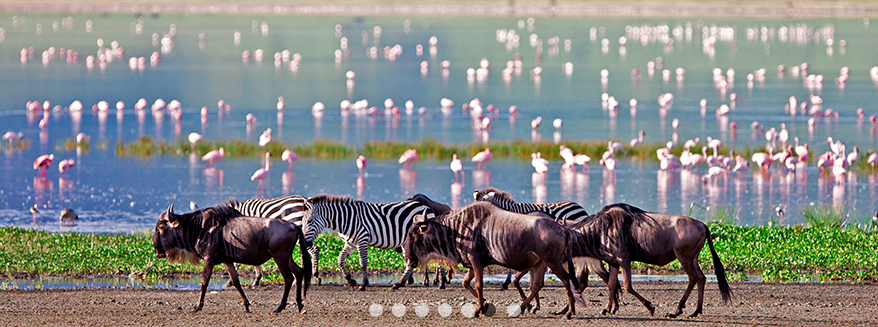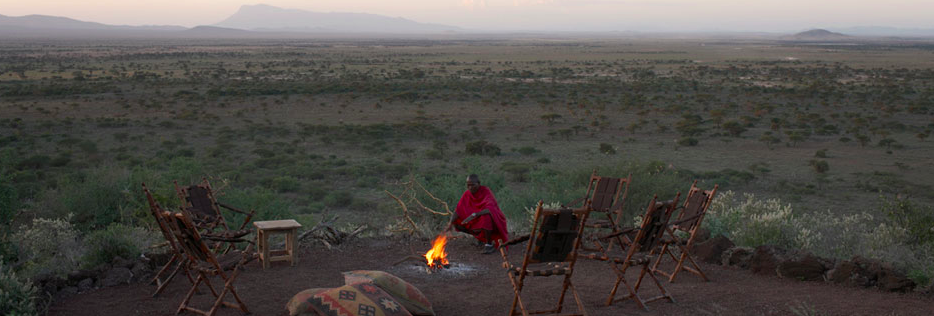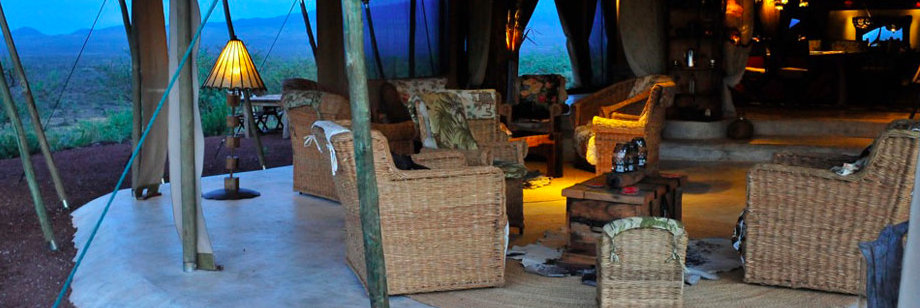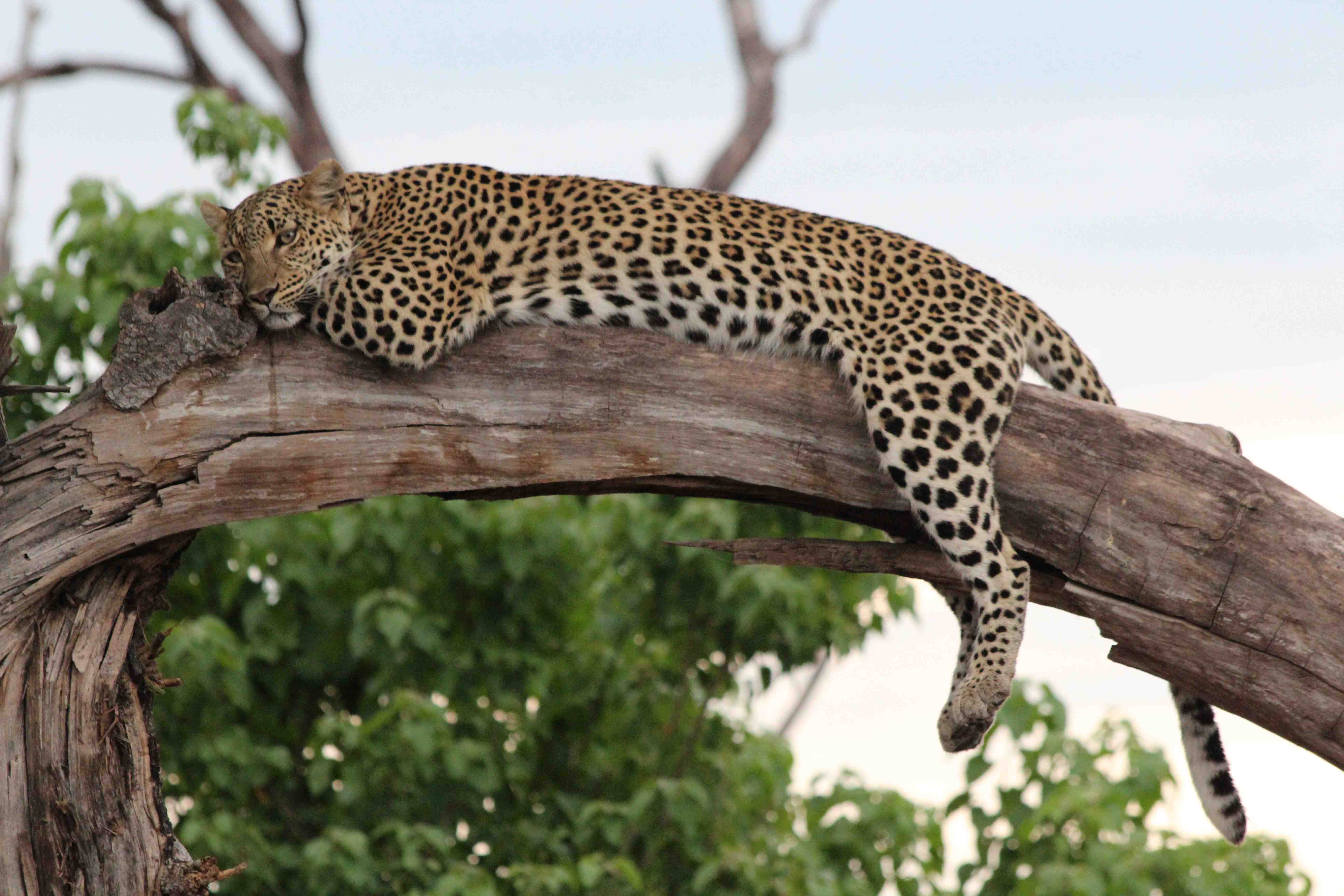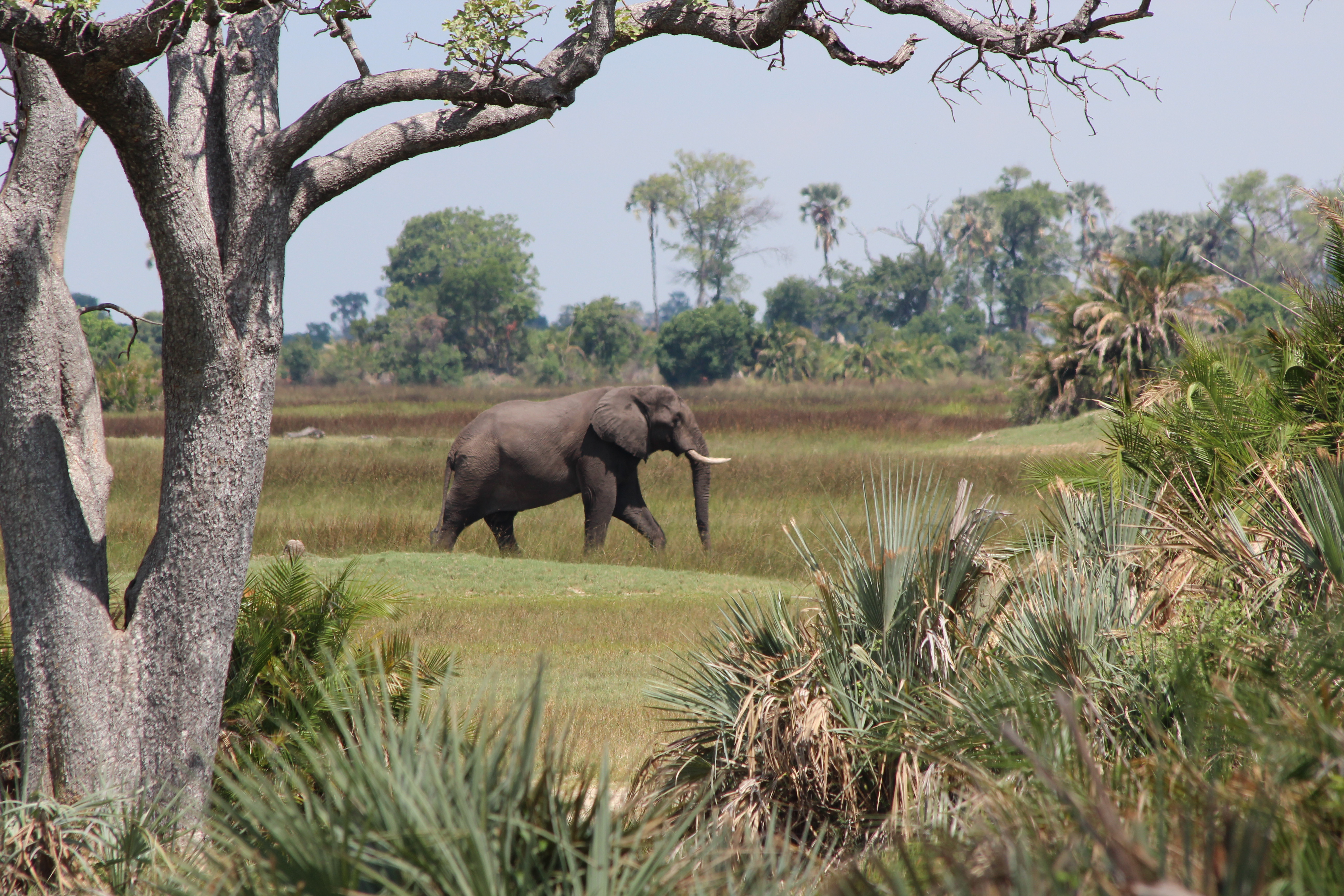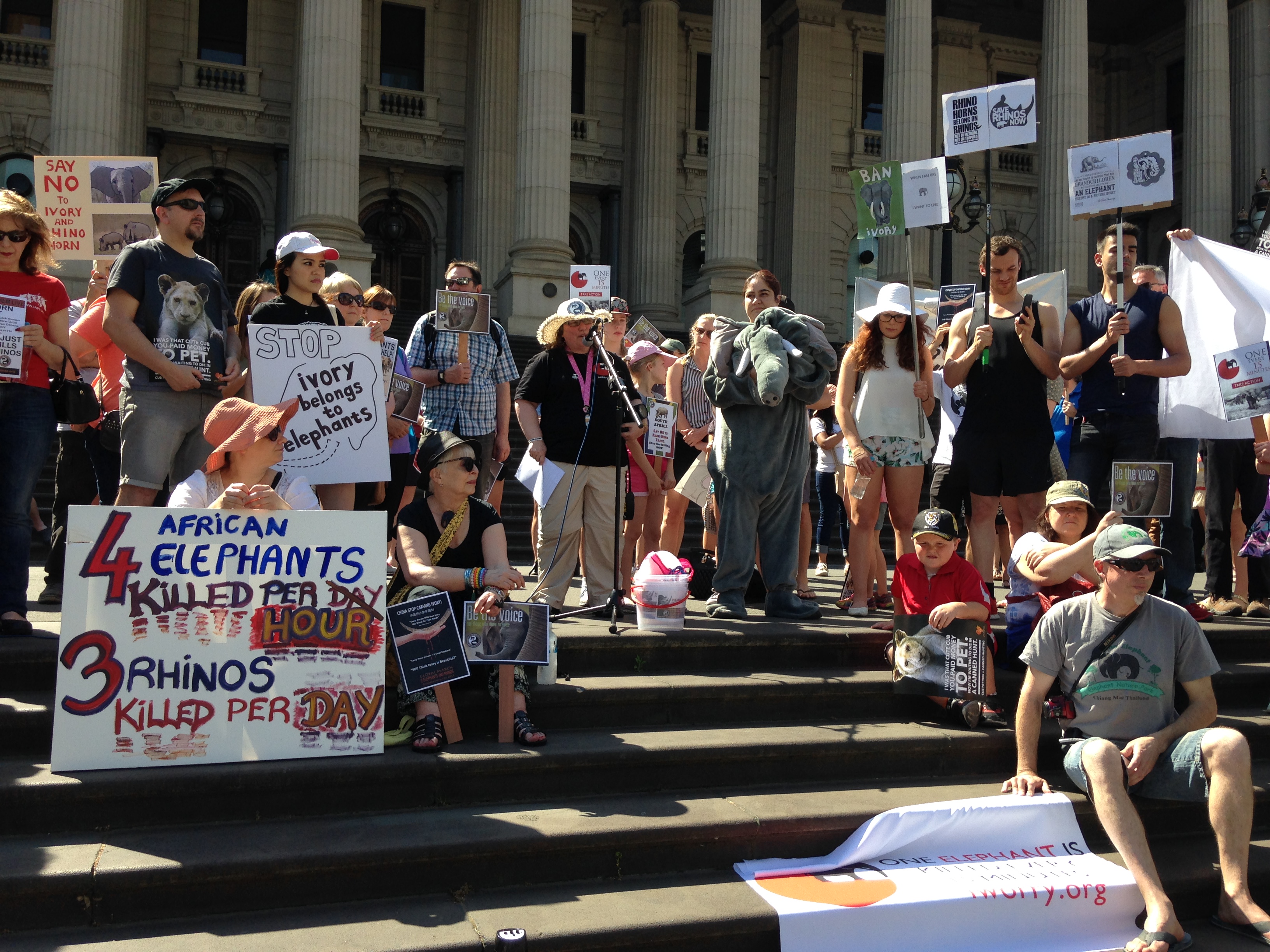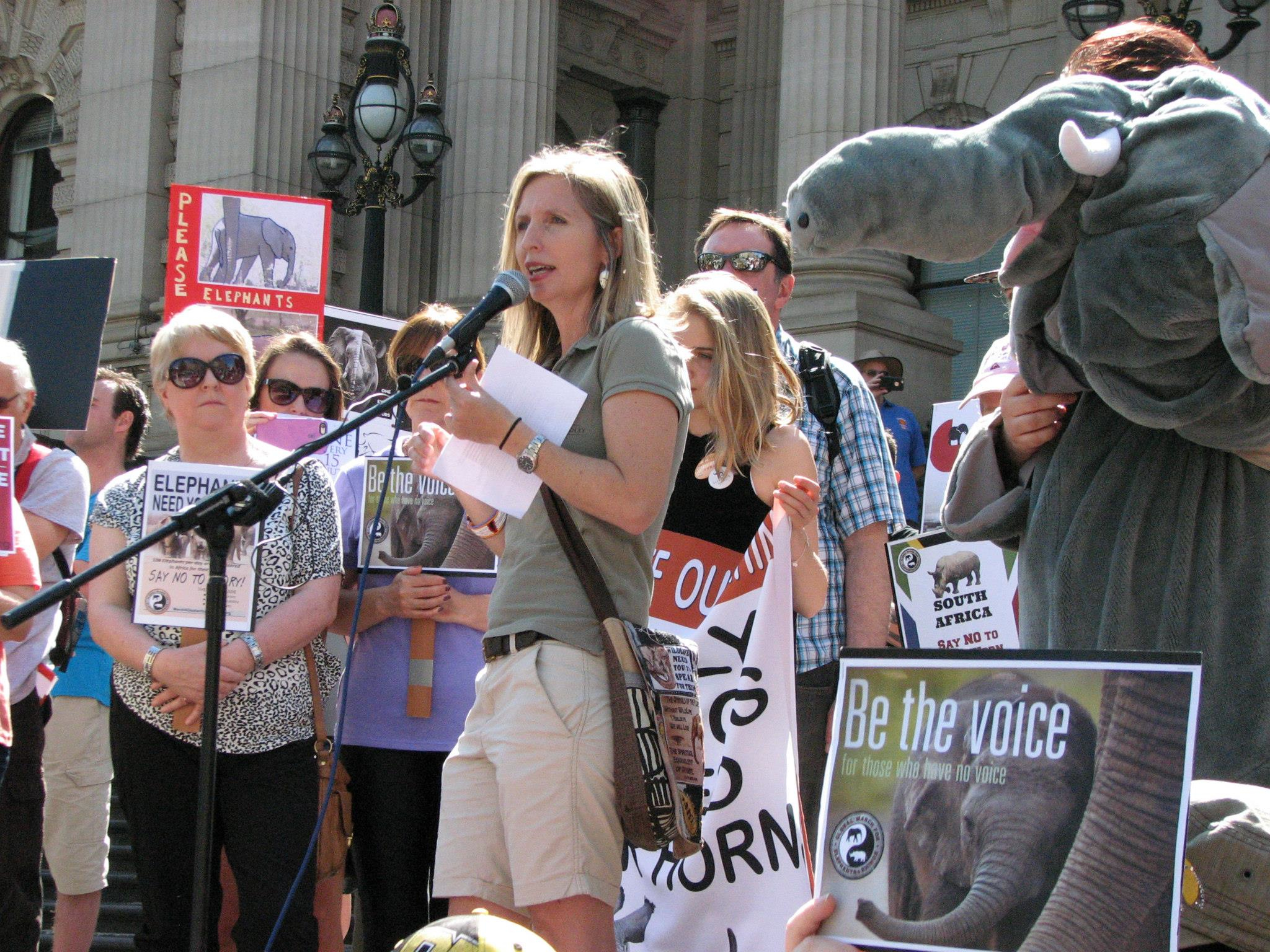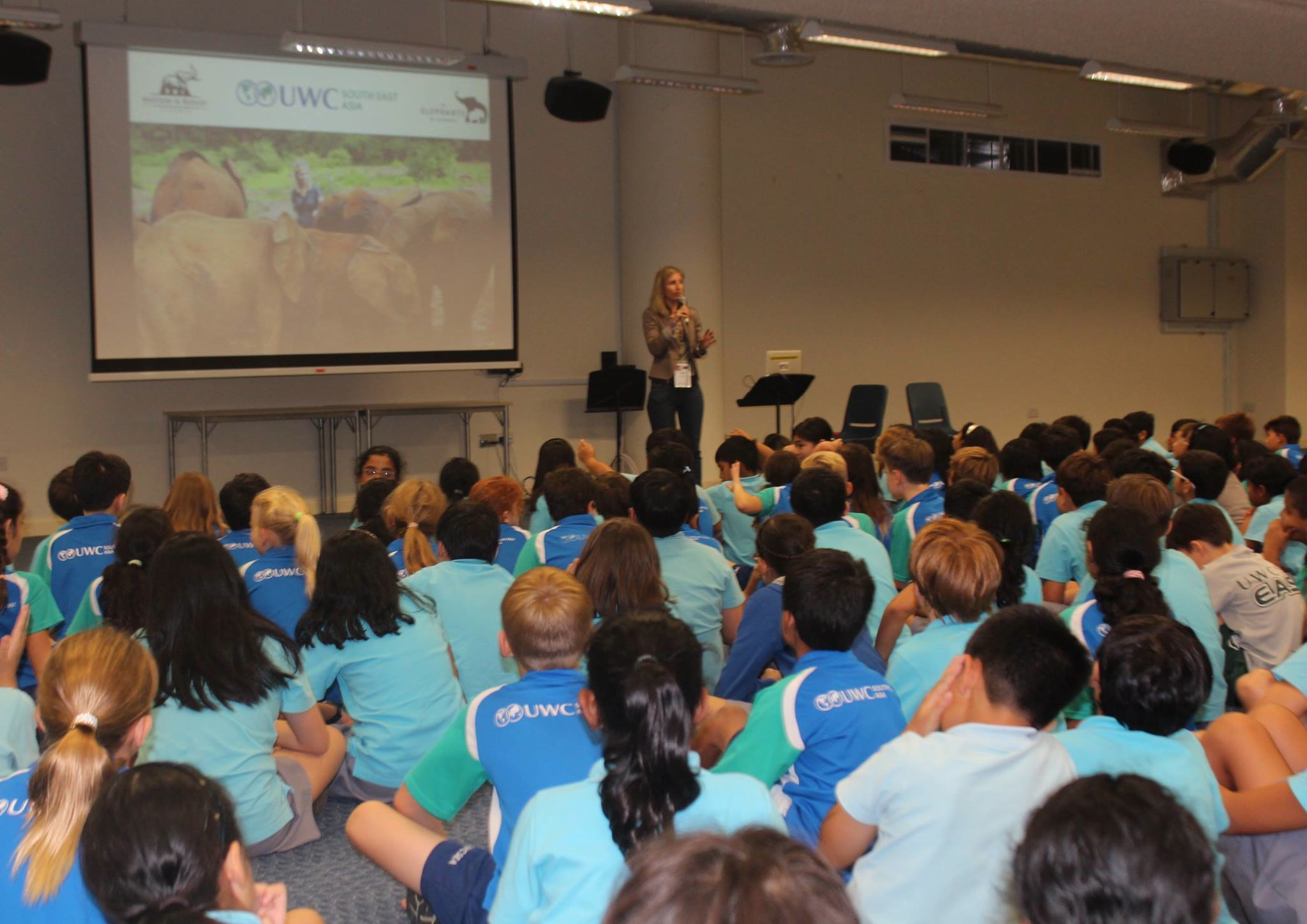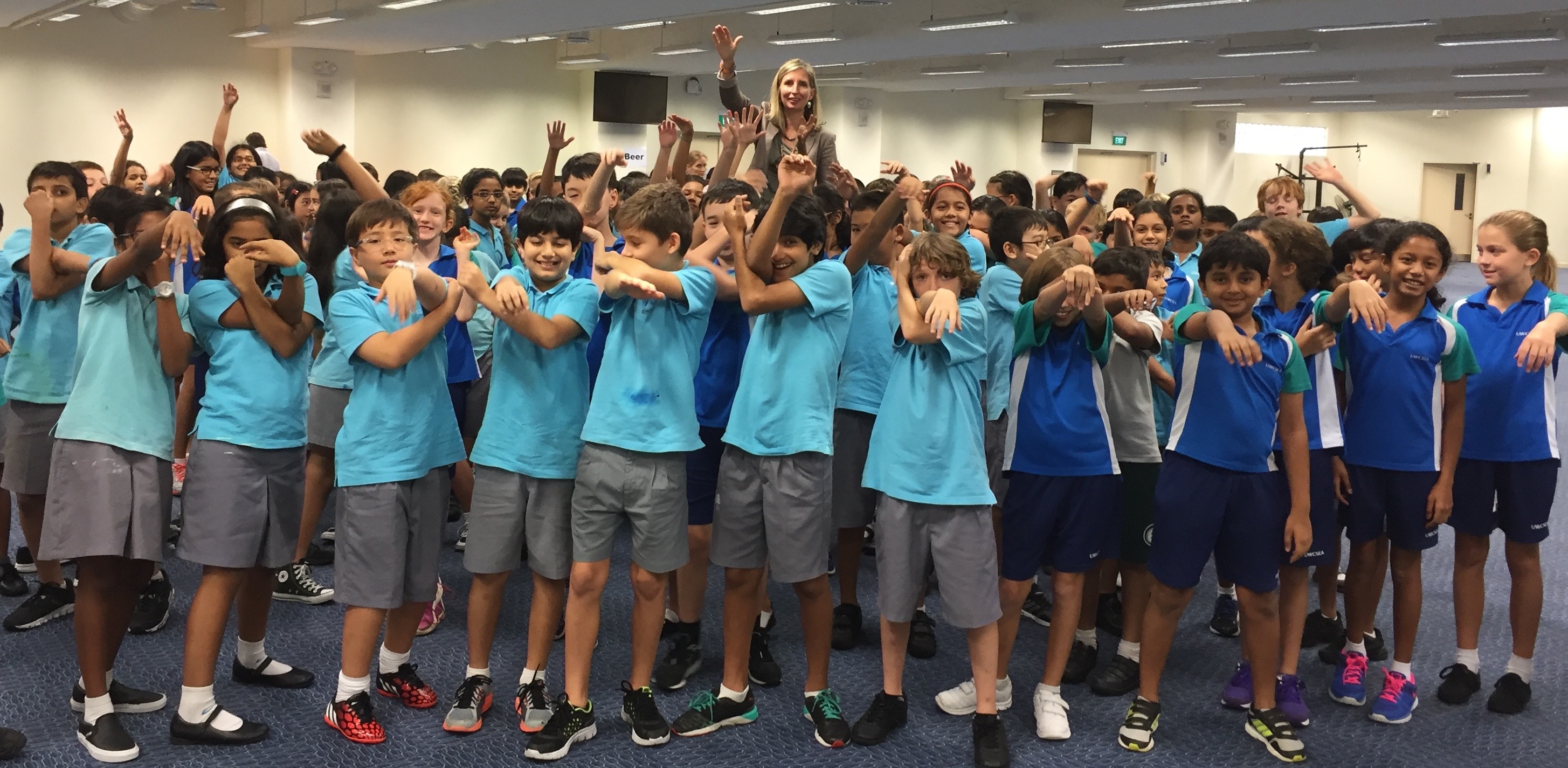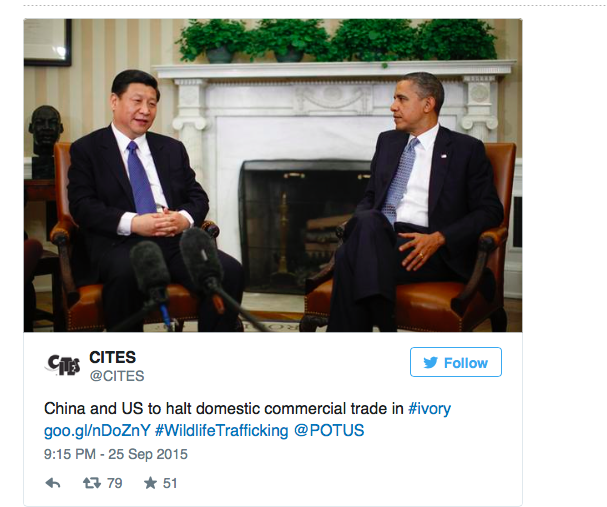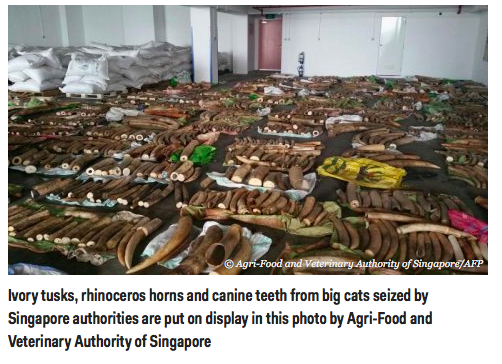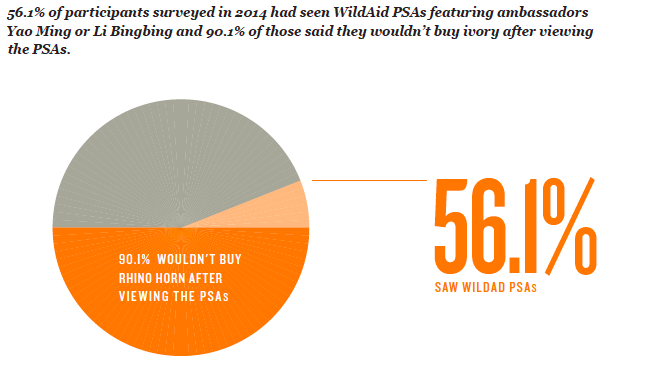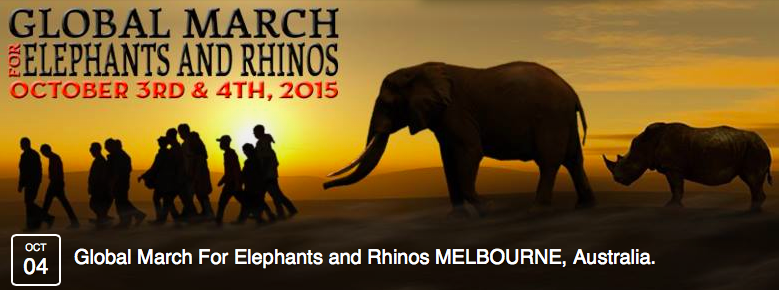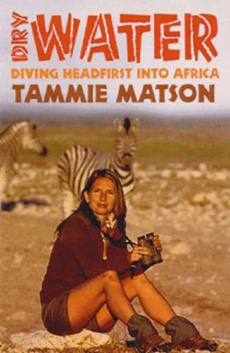Spotlight on Elephants in Tanzania
My last post about the state of African elephant poaching discussed the latest CITES report showing that less elephants are now being poached now than during the poaching peak in 2007, but also highlighted the fact that while some countries are doing better in terms of poaching (e.g. Kenya), others are still in big trouble and it’s no time to be complacent. Overall, there are still more elephants being poached than there are being born. Tanzania’s elephant population has taken a big hit and remains under serious threat for the ivory trade.
The shooting of British helicopter pilot, Roger Gower, by poachers in Tanzania, as the 37 year old man was conducting anti-poaching patrols over Maswa Game Reserve, shocked the world. This terrible loss of yet another person fighting against poaching is the tip of the iceberg of what’s been happening in this country over the past five years. Tanzania has lost more than half of its elephant population to poachers for ivory in the last 5 years, now estimated to be about 43,000, down from 109,000 in 2009, with Selous-Mikumi, Ruaha-Rungwa and Malagarasi Muyowosi ecosystems believed to have taken the biggest hits. That is TENS of THOUSANDS of elephants killed for ivory in a very short time, an appalling loss from a country that once boasted huge populations.

Roger Gower, the British helicopter pilot shot down during an anti poaching mission. Photo from BBC.
Globally, dozens of anti-poaching rangers die in the course of duty every year. We are losing too many people and too many elephants because of the ivory trade in numbers that are just not acceptable.
What is being done to turn the sheer scale of the poaching around in Tanzania? Since November last year, the country now has a new President, John Magufuli, who appears to be on a mission to root out corruption in general across Tanzania, and has appointed a task force to deal with the problem. We have seen some high profile arrests in recent months, including that of Chinese national Yang Geng Glan, the ‘ivory queen’, suspected of exporting thousands of tonnes of ivory to China, along with 1000 arrests since the formation of the task force. Tanzanian authorities say the poaching ring that killed Roger Gower has now been dismantled. As this blog goes out, 2 Chinese nationals have just been sentenced to 35 years jail for illegal possession of ivory and corrupt transactions.
It’s no small undertaking getting on top of a poaching problem that has become so endemic, rooted in corruption and greed. A good friend of mine from back in my past Namibian life, Aaron Nicholas, is on the ground in Ruaha, Tanzania, working as Program Director of the Ruaha-Katavi Landscape Program for the Wildlife Conservation Society. I asked him for an update on what’s been going on with Ruaha’s elephants and for his expert insights into this problem.
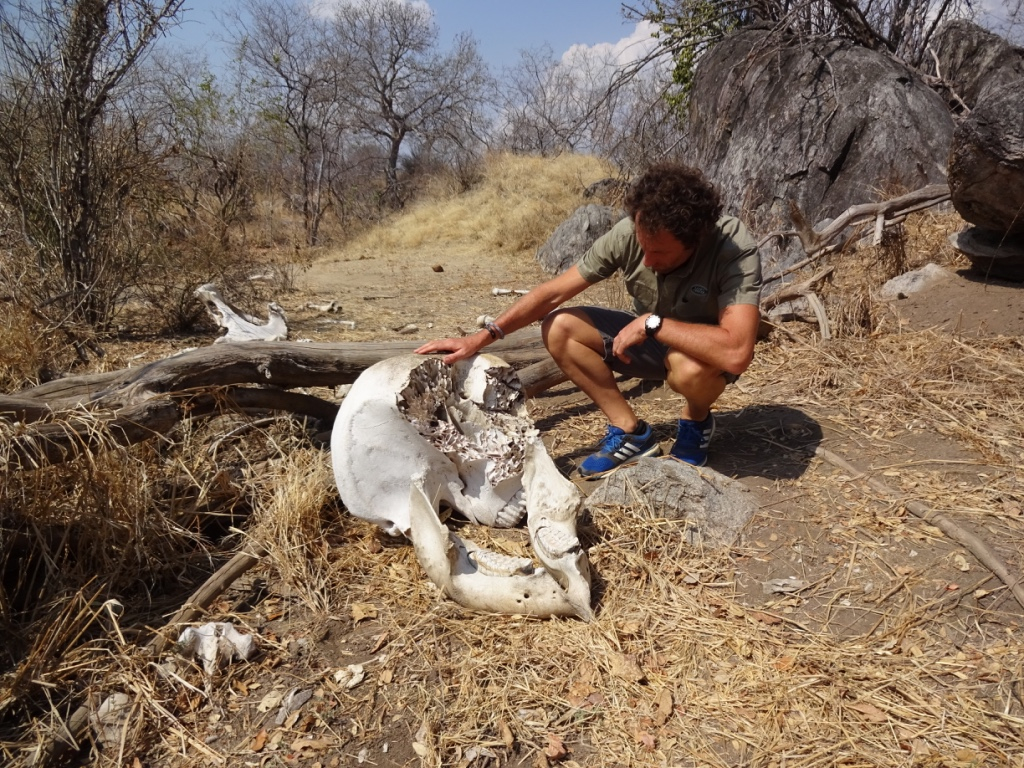
Aaron Nicholas, WCS program director in the Ruaha-Kativi landscape, investigates the skull of a poached elephant (credit: WCS Ruaha-Katavi Landscape Program)
Aaron, we’ve heard a lot of disturbing reports coming out of Tanzania. What is the future looking like for the country’s elephants, and in particular for those you’re focused on in Ruaha?
These are challenging times for Tanzania’s elephants for sure. The world has heard about the dramatic declines in elephant numbers in key elephant habitat such as the Selous Game Reserve and more recently the Ruaha-Rungwa landscape – the Selous population for example plummeted from around 35,000 in 2009 to around 13,000 by 2014, a staggering 66% loss, and although there is evidence to suggest the population is stabilizing there, poaching pressure continues to shift and the overall situation in Tanzania remains critical with the total elephant population presently standing at around 50,000, down from 109,000 in 2009.
It’s not all negatives. Landscapes in the north, where tourism is some ten times more buoyant than in the south have faired better and there is actually evidence of continued elephant population growth in places like the Serengeti and Tarangire. In the south however, elephants are still facing significant poaching pressure and this is where we are focusing our support to government and local communities.
What is WCS doing to try and combat the problem, and are you seeing results?
WCS has a long-standing presence and relationship with government here, having been present in Tanzania for the best part of 50 years. We have 5 well-established programs in Tanzania ranging from marine and coastal forest management to highland forest protection as well as Africa’s second longest running elephant monitoring program centered on Tarangire National Park.
Over the last 10 years or so we have focused in our area especially on building community engagement in wildlife conservation through the Wildlife Management Area approach- Tanzania’s take on Campfire, which is aimed at empowering communities to manage their wildlife and natural resources sustainably. In 2013 we made a commitment to partner with government to strengthen law enforcement efforts linked to elephant protection- this was the genesis of the Ruaha-Katavi Landscape Program, focused on East Africa’s largest remaining elephant population within this 115,000km2 landscape (almost twice the size of Tasmania).
We work with different wildlife authorities, establishing and strengthening capacities that have an immediate impact on poaching – for example, we have established a detection dog unit based in Ruaha National Park (they are just going operational now and will sniff out illegal cashes of ivory, arms and ammunition); trained more than 200 park rangers in law enforcement monitoring using a system called SMART and are deploying a specially equipped Cessna 206 in support of monitoring and coordination of field efforts. We support community wildlife scouts and are also planning advanced training for rangers and wildlife officers and working with other partners, especially the U.S. Government, to tackle the poachers head on.
There are signs that poaching is reducing in some key areas, but we will only be able to confirm this with certainty as these efforts continue to be embedded and our monitoring programs feed back results. Government is also stepping up, more rangers are being posted and just last week news came out that a special national anti-poaching unit will be constituted. We are starting to read about significant sentences being passed for ivory traffickers too with a number of individuals having been sentenced to 20 years of late for their involvement in the ivory trade. Above all, there are high expectations that President Magufuli will deliver on his anti corruption agenda within the wildlife sector as well.
What does a day’s work typically look like for you? (Many of my readers are aspiring conservationists and you are living their ‘dream job’!)
It’s mainly about coordination- ensuring that the 20 or so staff we have are able to deliver on their various roles, working with communities, wildlife authorities and other partners to strengthen capacities, engagement and commitment and ensuring that each of our teams efforts have as much multiplier effect as possible.
We have staff who engage with 46 or so communities within 4 Wildlife Management Areas, building the capacity of management authorities and helping establish effective governance and opportunities to derive natural resource based investment and benefits. Other staff liaise with national park, game reserve and Wildlife Management Area rangers as well as other law enforcement authorities- for example to ensure the detection dog unit can be effectively deployed. We also have ecologists who track wildlife trends, support wild dog and vulture monitoring and other important survey work. It’s an interesting and varied mixed bag!
I personally spend a lot of time coordinating our work with various partners and other agencies including USAID and the U.S. Embassy in particular who channel various forms of assistance to the field based on the various U.S. commitments to combatting wildlife trafficking. When I can I get into the field to maintain a sense of where we are with our efforts and once our Cessna 206 arrives I will take advantage of that key tool to get airborne regularly as well to visit all parts of this huge area. Being around elephants on the ground keeps you grounded too and there’s nothing I like more than grabbing a few hours sitting under a baobab and being awed by some pachyderm presence!
Can you tell us about any stories from the field that you’ve personally experienced that could give us a sense of what it’s like there on the ground?
I’ve had my fair share of close calls with poachers over the years and I’m pleased in many ways to be one step removed these days. To do this job though under these circumstances, it’s critical to have the experience of having been at the sharp end of things- rangers are the bedrock of protection activities and their daily commitment to this dangerous work can never be taken for granted.
Field conditions in our landscape can be very challenging in the wet season in particular, especially in the game reserves where sufficient resources to maintain an effective patrol presence are often lacking. We recently helped rangers in Rungwa game reserve re-establish year round presence in a strategically placed ranger post that has been abandoned for more than 10 years through the provision of transport and other essential field equipment and are also working with the U.S. Government to re-establish an effective radio system – these are the kind of practical actions that patrol teams need.
Having worked in conservation other countries like Namibia and Cameroon, you have a good perspective on the future of wildlife in Africa. How do you feel about this, given the Africa’s population is predicted to double by 205, and soar to over 11 billion by 2100. What gives you hope?
Population growth is certainly the biggest long-term challenge and we should certainly all be promoting family planning that’s for sure!
I take heart in that our landscape has relatively low population densities in many areas and issues of habitat connectivity for species such as elephants are certainly aspects that we can still achieve a great deal with. We are currently engaged in a process of working with key stakeholders to define and manage what would be East Africa’s most significant elephant corridor, connecting core elephant populations in the east and west of our landscape- these are the kind of initiatives that deserve as much effort as possible against the backdrop of increasing human populations and land-use change.
We hear a lot about the Serengeti and how amazing it is a tourist destination, famed for its migration of plains species. I personally have always wanted to go there and will be taking a group of travellers there with me in August 2017. Tell us a little about this part of the world.
An iconic globally recognized landscape that is guaranteed to connect you to Africa and its wildlife. Loose yourself in the endless horizons, soak up the wildlife dramas all around and remind yourself of the importance of thinking big to achieve meaningful conservation!
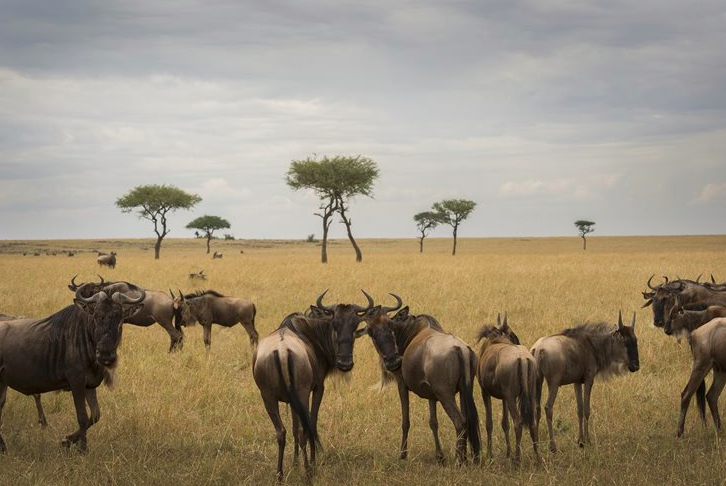
The famous Serengeti in Tanzania (credit: Asilia Africa) – get in touch with me now to sign up to join me there in August 2017!
The Good, Bad & Hopeful News for Africa’s Pachyderms
CITES’ latest report on the results of the MIKE (Monitoring the Illegal Killing of Elephants) programme has some good news in it for elephant populations and some not so good. The overall number of elephants being killed for ivory has stabilised, after a peak in 2011, but there are still more elephants killed every year than are born (see BBC story).
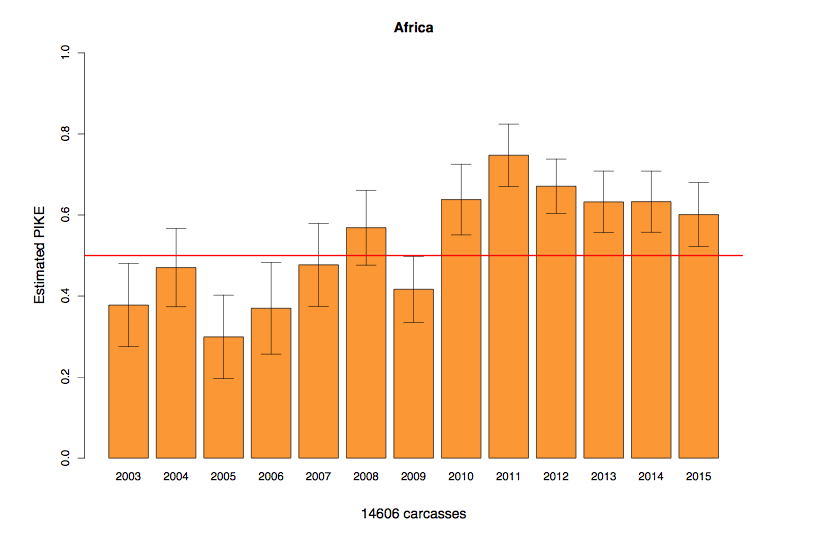
Graph showing proportion of total elephants found killed that were poached, from the MIKE programme, 2015. Note the declining trend in poaching since the 2011 peak.
In Kenya, things appear to be looking up, especially in Tsavo National Park, with an overall decline in poaching reported. Well done Kenya! It hasn’t been an easy few years for Kenya, with the ecotourism industry hard hit by unfounded fears of ebola (which never came close to the country) and a couple of terrible terrorist attacks, but nonetheless their commitment to turn things around for elephants appears to be paying dividends.
Of concern however is the upward trend in poaching in the world famous Kruger National Park, and a couple of other southern African sites including Chewore, Zimbabwe. In southern Africa, poaching levels are still well below the sustainability threshold, but the upward trend is of concern, especially as this part of the world is considered a real refuge for elephants.
Central and West Africa continue to be of serious concern, with poaching levels still well above the sustainability threshold for elephant populations. Read the full report here.
So overall, I think this latest CITES report suggests the great efforts made in recent years, at all ends of the spectrum from demand reduction to anti-poaching, are making a difference in some places, but it’s definitely not the time to be complacent.
What about rhinos? The recent report by IUCN showing that overall poaching across Africa for rhinos is at its highest since 2008 shows that poaching is by no means slowing down across Africa for other thick-skinned large mammals either. The South African government recently reported that rhino poaching was down in South Africa in 2015 compared to the previous year, albeit by a very small number (about 40). The big picture outlined in the IUCN report just out suggests the fight must go on if rhinos are to have a future in the wild.
Why go on fighting this battle? Lots of reasons, but a big one is that it IS possible to win.
I take heart from countries like earthquake-hit Nepal, which has had ZERO poaching of its greater one-horned rhinos in three of the past five years. Part of their success in conservation following the civil war (which took a hard toll on wildlife) is reported to be their tough penalties on poaching and a streamlined judicial process dealing with offences.
And then there is Uganda, which has seen its elephant population increase 600% from 700-800 in the 1980s to over 5000 in 2015. These countries demonstrate that it is possible to turn things around; and that political will and hard line processes are key to success. It’s amazing what can happen when governments take this problem seriously.
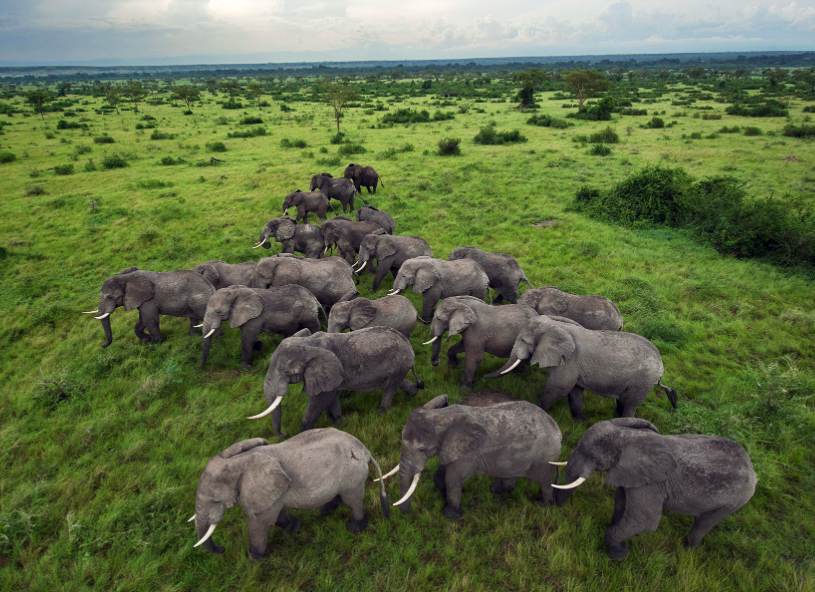
Elephants in Queen Elizabeth National Park, Uganda, are doing better than in the 1980s by a long way (photo by National Geographic)
Confirm your place – Rwanda & Tanzania 2017!
I posted an article on my Facebook page from National Geographic last week about young gorillas seen dismantling poachers’ snares for the first time. It suggests that the youngsters knew how dangerous the traps were and researchers said they may have done it before, given how quickly they dismantled it. For a critically endangered species with less than 900 left in the wild, this is a good sign because with such low numbers we really can’t afford to lose any wild gorillas, especially the next generation.
Their numbers remain low, but responsible tourism has been key to the fact that gorilla populations are now increasing in the wild. Tourism now accounts for almost 8% of Rwanda’s GDP and this gives the government and the local people real incentives to keep the mountain gorillas that sit at the heart of the country’s tourism alive. Read more about how responsible tourism is key to the survival of mountain gorillas here.
August 2017 may seem like a long way off but that gives you an idea of the popularity of the highly awarded safari camps I’ll be taking two groups to to trek with mountain gorillas in Rwanda’s Volcano mountains followed by a week at Ngorogoro crater and the Serengeti in Tanzania. We have to book this far ahead to secure space. I’ve had a lot of interest already in both trips and I’ll be taking a maximum of 10 people on each. I’ve personally hand picked every element of both safaris – they’re going to be amazing!
Anyone who’s been on one of my group safaris knows how intimate these adventures are. I keep the groups small because I like to get to know people and I find that a small group size also enables firm friendships among like minds to be made. These are wild, adventurous, spiritual experiences that will change your life while benefiting local people and wildlife – not your run of the mill safari! So if you’d like to confirm your place, please get in touch with me now to pay your deposit and make sure you don’t miss out! I already have more interest than I have places, so the sooner you confirm your place the better.
Read all about my 2 group safaris in Rwanda and Tanzania by clicking here. Contact me for a full itinerary with all the inclusions (as with all my safaris, almost everything is included in the price other than your international flight).
There’s more information on all the safaris we offer at Matson & Ridley Safaris on our new website so click here to learn more. I also have one spot left for a single woman on my Namibian Skeleton Coast safari in May this year and 3 spots left for a couple and a single woman on my Zimbabwean safari in September this year.
Hope to see you on safari soon!
Launch of our new website
Happy new year and here’s hoping your year has lots of inspiration and adventures of the African kind in it!
To kick off 2016 with a resounding trumpet we’d like to share the exciting news that Matson & Ridley Safaris’ new website matsonridley.com is now live! For a dose of inspiration and some ideas on your next African adventure, please take a look and share it with your friends.
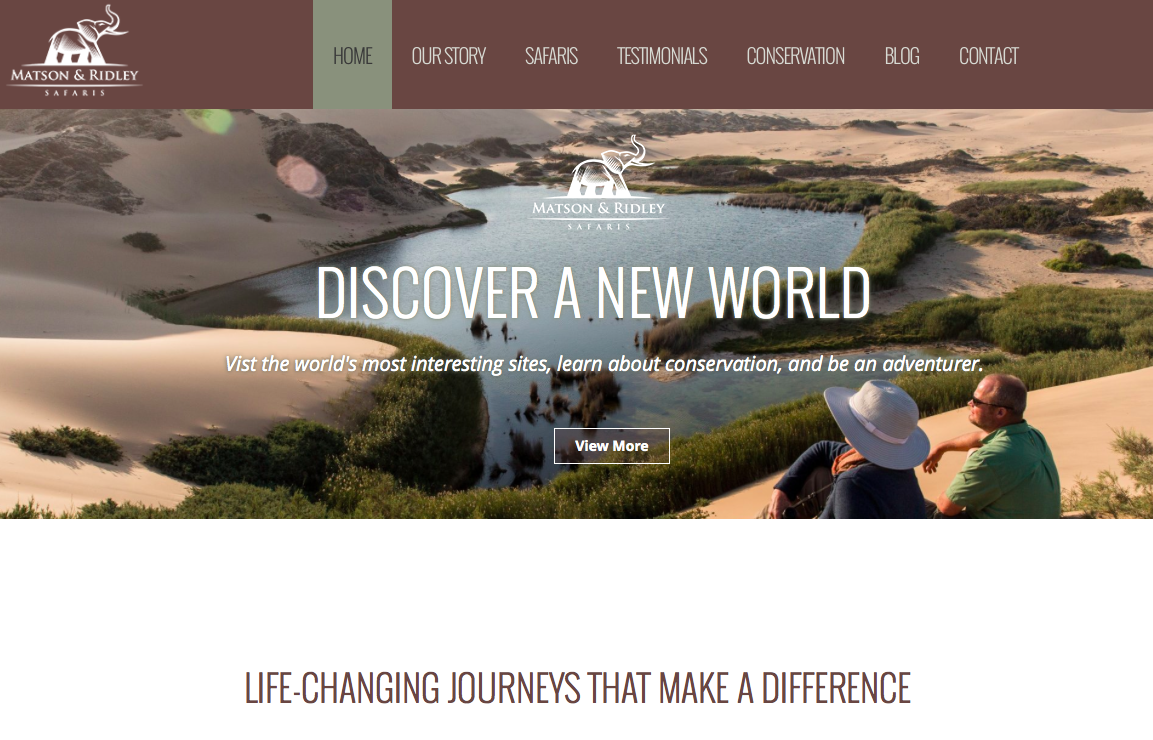 Matson & Ridley Safaris has been a labour of love of Andy’s and mine for the last two and a bit years, and we’re delighted that many of you have already been on not one but two safaris with us, as well as signing up for more in the future. I think this is a sign that we’re on the right track with the life-changing experiences in Africa that we’re offering.
Matson & Ridley Safaris has been a labour of love of Andy’s and mine for the last two and a bit years, and we’re delighted that many of you have already been on not one but two safaris with us, as well as signing up for more in the future. I think this is a sign that we’re on the right track with the life-changing experiences in Africa that we’re offering.
You can read some of the feedback we’ve had from guests on our safaris on our Testimonials page. The overwhelming feedback we get is that people love the fact that they’re not just having an amazing experience on our safaris, they’re also learning a lot while there, very importantly, able to also give back while on holiday, and to see their positive contribution with your own eyes. You can read more about the conservation projects we support on our Conservation page.
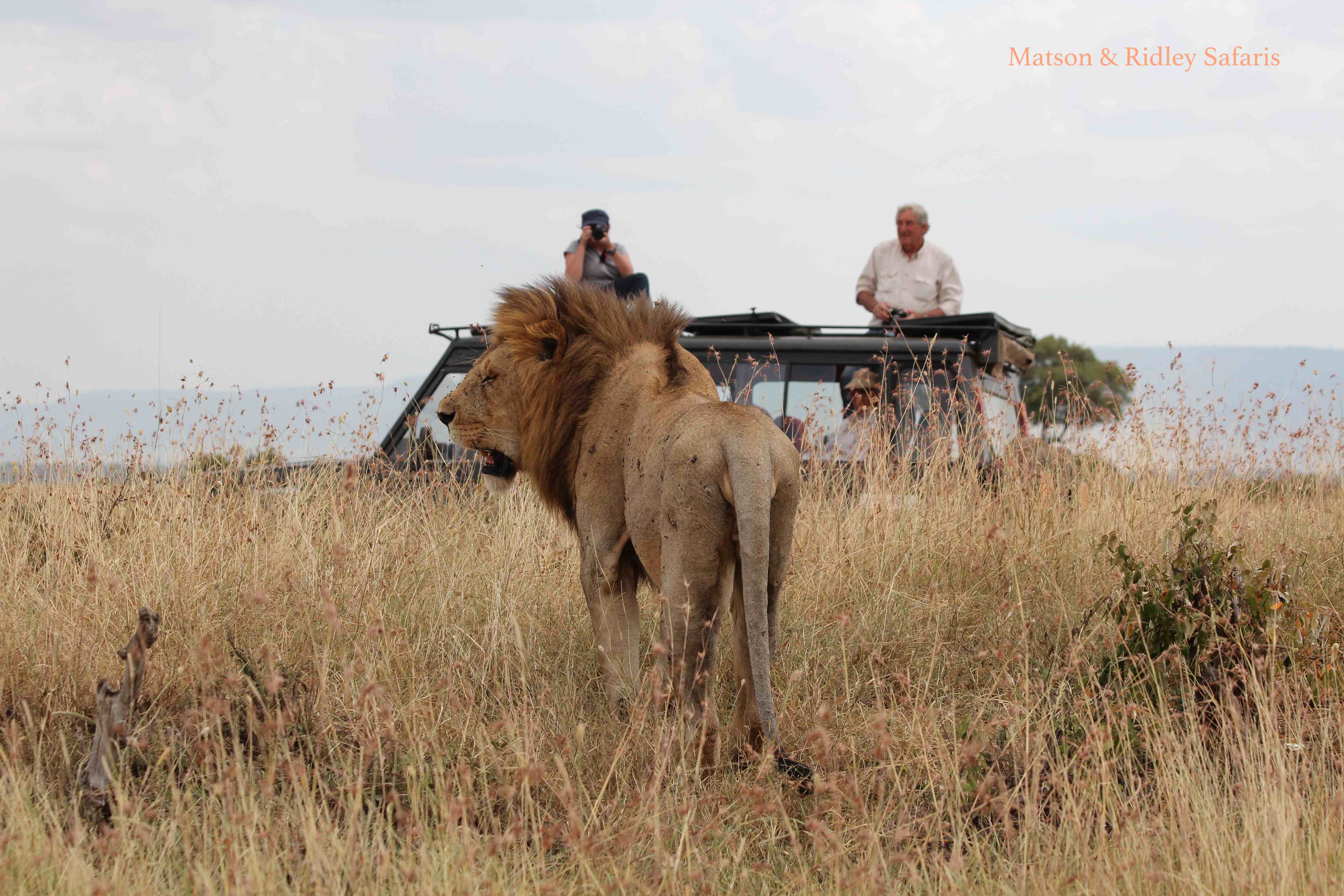
Tammie’s group watches an exhausted male lion (in between a week of mating every twenty minutes) in Kenya in July 2015
We are learning, growing and passionate about continuing to provide incredible safaris that make a difference to Namibia, South Africa, Zimbabwe, Botswana, Kenya, Tanzania and Rwanda (and open to any others you suggest to us!). Check out our Safaris page to learn more about the destinations we tailor safaris to. Life is short and there’s so much to explore!
Our family safaris are growing increasingly popular, so if you’re interested to learn more about taking your precious treasures on the trip of a lifetime check out our Family Safaris page. There are great deals available with discounted rates for kids.
If you’ve had a great safari with us, please let your friends know about us and help us grow our business into one that can really make a difference in conservation. Go on – take a moment for an Africa fix – matsonridley.com is now live!
Wishing you a happy holiday!
It’s that time of year again, and it seems to have crept up so quickly (or maybe I’m just getting old!). Now at the end of our second year in business at Matson & Ridley Safaris, Andy and I wanted to thank you for your support and to wish you a wonderful Christmas and new year. I’ve put together this short video (scroll down to see it), which I hope you’ll enjoy, sharing a few special memories of my adventures with you in the last couple of years in Botswana, Kenya and Namibia. Thanks to all who shared their photos for this, but in particular a big thanks to all the people who made these journeys so wonderful in Africa’s most incredible wild destinations!
For me, it’s a real joy to be able to reflect back and know that our fledgling safari business is helping support so many worthwhile on-ground conservation initiatives, from the Save The Rhino anti poaching efforts in Namibia, to the Giraffe Conservation Foundation, David Sheldrick Wildlife Trust and the Mara Naibosho Lion Project. Those who come on my safaris often get to meet some of the dedicated people behind these operations.
And of course, just by supporting Matson & Ridley Safaris, you’ve helped me continue to keep spreading the word in the Let Elephants Be Elephants campaign, around Singapore, Hong Kong, the Philippines, Australia and even in my new base in the Netherlands. The LEBE campaign has raised approximately SGD$40,000 (almost US$30k) for awareness raising on ivory trade in Asia since its inception, and Nadya and I have spoken at dozens of schools, events, conferences and government departments across the region. A new study by Save The Elephants just revealed that growing public awareness through campaigns like the one by WildAid in China have played an important role in the halving of the price of ivory in the past year, a truly outstanding result that will help reduce elephant poaching. Our LEBE campaign continues in Southeast Asia in 2016 – more news to come on that soon.
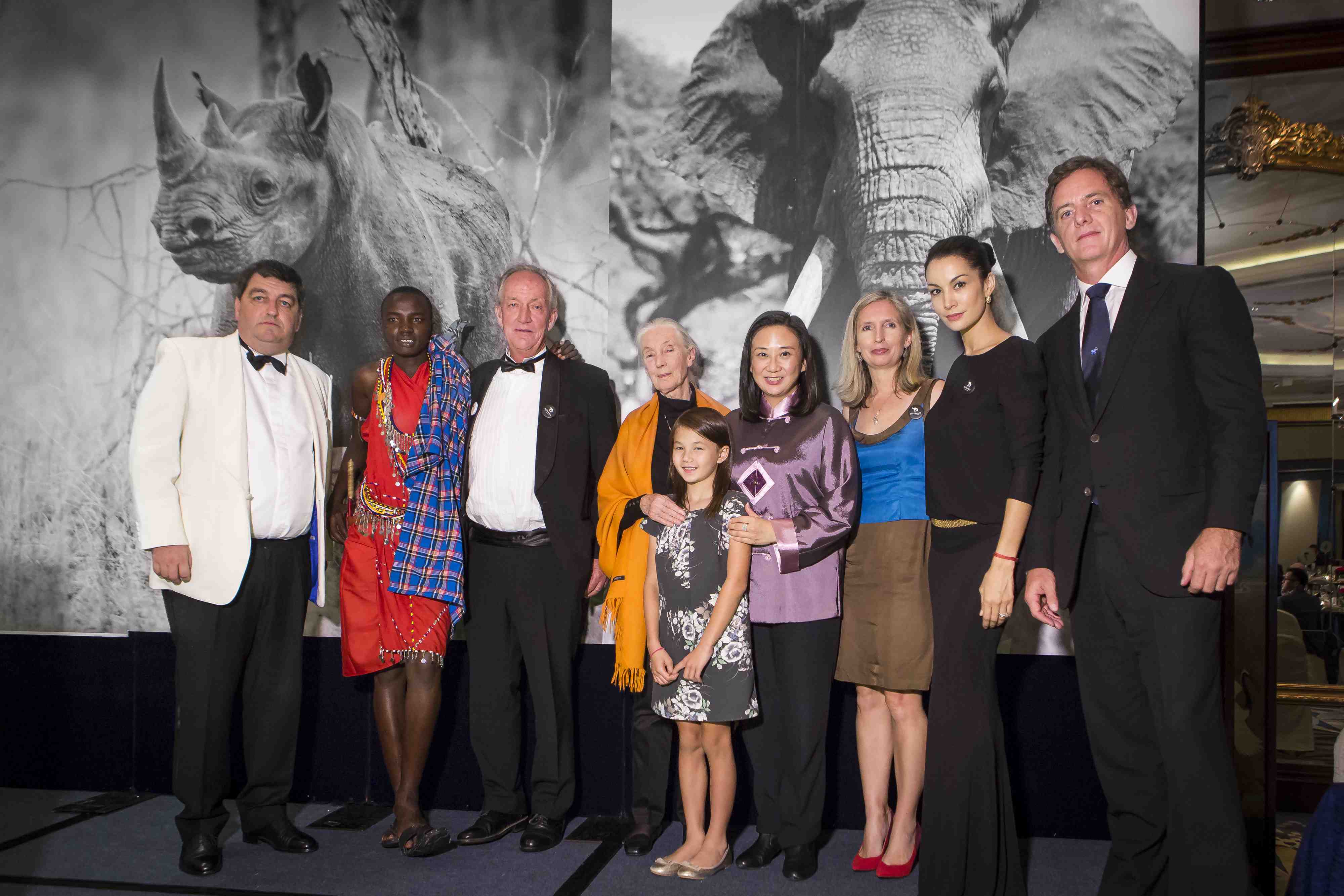
The LEBE team at one of our awareness and fund raising events in Hong Kong, with the team from the Hong Kong Elephant Society, Jane Goodall and Richard Bonham of the Big Life Foundation (photo: Hong Kong Elephant Society)
But I think our biggest contribution through Matson & Ridley Safaris is the benefits your safari bookings provide in terms of local employment in Africa. Wilderness Safaris recently released a breakdown of how your safari dollars are spent, and most enlightening for me was that about two-thirds goes to local employment. This is so important! In Africa, conservation of wildlife is directly related to the economic benefits people get from wildlife, and so this really is a win-win scenario for both people and wildlife. In rural areas where these camps are, there are few other economic opportunities for people, so ecotourism done right can be a real lifeline. Asilia Africa, who we work with to plan your East African safaris, focus on education and conservation, as well as community partnerships to deliver long term sustainability that benefits local people. You can read more about their positive impact and approach to sustainable business development here. When you go on one of our safaris, either independently or with me, don’t forget to ask about all the incredible work these ecotourism companies are doing to ensure that you not only have an amazing experience but that the local people and wildlife directly benefit from the monies you spend.
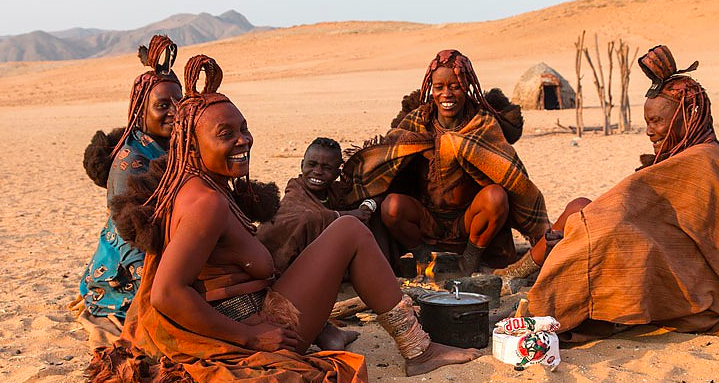
Providing local employment in rural areas in Africa is one of the most important contributions made by ethical safaris (photo: Wilderness Safaris)
Very soon we’ll be launching the new Matson & Ridley Safaris website, but in the meantime you can find us on the Matson & Ridley Safaris Facebook page – like us here to see the latest updates on all our safari offers and opportunities, and you can share your photos there too. We have big dreams for our conservation work – please help us get there by spreading the word about our ethical safaris!
Don’t forget it’s not too late to sign up to join me in northern Zimbabwe in September next year, and I still have one spot left for a single woman sharing in North West Namibia in May (last minute discount available for the latter). There are great deals available for family and group safaris in 2016 all over Africa’s safari regions, especially if you go in the green season. May 2016 be a year of adventure, excitement and inspiration for you all and I hope to see you by the campfire under a starry African sky soon!
Rwanda & Tanzania Journeys with Tammie August 2017
Ever dreamed of getting up close to endangered Mountain Gorillas? This has always been on my ‘wish list’ to do one day, ever since I read Dian Fossey‘s ‘Gorillas In The Mist’. Such close relatives to us, I really can’t imagine what it will be like to be eye to eye with wild gorillas, but I imagine it will feel a lot like meeting a long lost family member!
I’ve also always wanted to see the Great Migration in the Serengeti, and the famous Ngorogoro Crater, focusing on the time of year when the wildebeest herds are crossing the croc-infested rivers. It must feel like you’re in the cradle of humankind when you experience animals in the kind of numbers that the Serengeti is known for. I can’t imagine the wow factor when you’ve got all those animals around you and it’s not a David Attenborough documentary!
As always with my personally-led safaris, I’ve chosen the camps and safari operators to maximise our positive impacts, which means that your safari is as good as a donation to charity. Responsible tourism is all about supporting local communities, because this is what keeps poaching at bay. You will pay more on one of my safaris, but that’s because we are giving back directly to local communities and wildlife. Your contribution goes right to the ground where it’s needed most, supporting local economies based on wildlife. I’ll be with you sharing zoological and conservation insights, along with our local guides, and we can expect the very best standards from the operators I work with. You also get the added benefit of having experts in wildlife conservation come and talk to us about their work in the areas I take my groups, something I arrange personally.
In August 2017, I’m offering two amazing journeys back to back, first to Rwanda to see the Mountain Gorillas and then to Tanzania for Ngorogoro and the Serengeti. You can do either one, or both, with me, and if you like you can add on an additional few days at Mount Kilimanjaro, exploring the foothills of this magnificent part of the Great Rift Valley. This is a dream safari – both of them are actually – so get in touch with me if you’re interested at this stage as I’m taking a list. I’ll be taking deposits to secure places early next year (and hoping for an improvement in the Aussie dollar next year for my Aussie friends who want to join).
Mountain Gorilla Conservation Safari, Rwanda
“Eye to eye with gorillas… this is a journey that will touch your soul”
Dates: 7-12 August 2017
Group size: 10
Max price: US$5650 per person sharing
7 August – Arrival and transfer to Kigali Serena Hotel
8 August – Transfer to Sabinyo Silverback Lodge via a visit to the Genocide Memorial Museum.
9 & 10 August – Gorilla trekking. Overnight at Sabinyo Silverback Lodge.
11 August – Trek to see the Golden Monkeys, prior to transfer to Kigali Serena Hotel.
12 August – Transfer to Kigali Airport for flight out.
Includes 2 x official gorilla permits (US$750). Almost everything is included in the price other than your international return flight. For full itinerary and inclusions contact me here.
Why did I choose Sabinyo?
Sabinyo is Rwanda’s first ever community owned lodge. This counts for a huge amount because when local communities are owners – not just employees – they have a genuine incentive to want to conserve their natural heritage supporting the economy. This is the best kind of conservation you can get. The lodge was built by the Governors Camp Collection in collaboration with the African Wildlife Foundation and the International Gorilla Conservation Program to provide income to fund development in the local community and conserve the endangered Mountain Gorilla. Read more on the positive impact your stay at Sabinyo will have here.
Tanzania Conservation Safari
Dates: 11-17 August
(NB. for those doing the Rwandan safari too, their Tanzania safari starts on 12th and at reduced price as they don’t do the first night at Machweo, but fly direct from Kigali to Ngorogoro)
Maximum Price: US$6850 per person sharing
11 August: Collection from Kilimanjaro Airport and transfer to Machweo Wellness Retreat for overnight stay
12 August: Collection from Machweo and drop off at Arusha Airport for your flight to The Highlands, Ngorogoro Crater, followed by afternoon community visit.
13 August: Full day game drive into Ngorogoro Crater. Opportunity to visit the Empakaai crater and climb the Olmoti crater. Good chance to see wildebeest, zebra, gazelles, ostrich, cheetah and flamingoes.
14 August: Transfer from The Highlands to Kimondo Camp, where we will stay for 3 nights, enjoying the spectacle of the Great Migration right on our doorstep.
17 August: Transfer to local airstrip for flight to Kilimanjaro Airport.
All internal local flights, meals and drinks, luxury accommodation and transfers are included in the price, along with park and conservation fees.
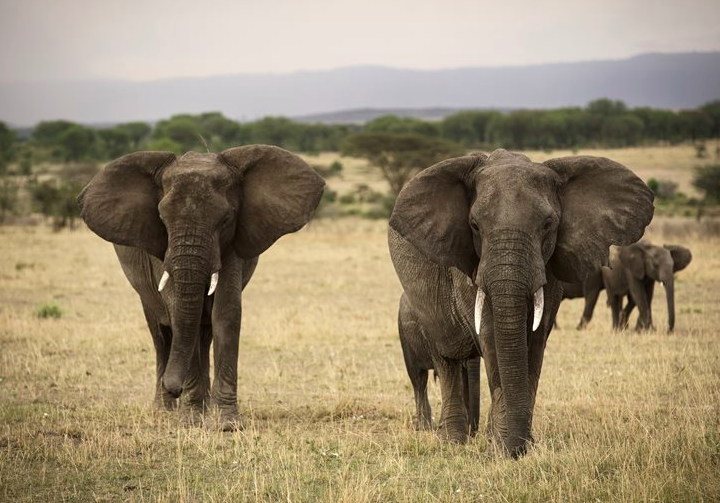
While Tanzania’s elephant population has taken a major hit in the past five years, this area provides a safe haven for them (photo: Asilia)
Optional Add On:
Dates: 17-19 August
Price: US$1600/person sharing
17 August: Fly from Kimondo Camp to Shu’mata Camp at the foothills of Mount Kilimanjaro and spend some time exploring this beautiful region. This camp is linked to the Momella Foundation. 2 night stay.
19 August: Return transfer to local airport for your flight to Kilimanjaro Airport.
Why did I choose these camps?
Firstly, they are in the best areas for us to experience a private and outstanding wildlife experience during the Great Migration. There’s nothing worse than lining up behind a dozen minivans at a cheetah kill, which is unfortunately what you get if you go to the reserves in peak season in East Africa. With my groups, I opt for exclusivity and the optimum wildlife viewing experiences, in a safe pair of hands. My ground operator for this outstanding safari is Asilia, which I know I can rely on to provide excellent service, beautiful boutique style tented accommodation and local guides with an intimate knowledge the local wildlife. On top of that, Asilia is a company known for what it gives back to local communities, which directly supports conservation. Read more about Asilia’s positive local impacts here.
Contact me to register your interest in either one (or both!) of these safaris now and I look forward to sharing this amazing adventure with you!
Limited Places Left on my 2016 Safaris (& a sneak peak at my 2017 safaris!)
I’m getting very excited about my upcoming safaris in 2016, which are set to be in some of Africa’s most spectacular wilderness areas! As always when you book with Matson & Ridley Safaris, the whole experience are specially hand-designed by me every step of the way to ensure that your hard earned dollars are spent as ethically as possible, to maximise benefits flowing back to African people and their wildlife. And of course, I choose the areas and camps I want to go to based on the best I can find in terms of wildlife experience, exclusivity, camp feeling and local culture – so you get a mind-blowing African journey that will change your life. Most groups I take are between 8 and 12 people, so you get to know people really well. Imagine yourself spending time with like minds on the savannah while watching elephants and then spinning a few yarns under the starry night sky by the campfire later – life doesn’t get much better really!
I have a few spots for my safaris left in 2016, but don’t wait to grab your spots as these have to be booked this year.
Kenya’s Maasai Mara in the green season, including a private visit to Daphne Sheldrick’s elephant orphanage
20-27 Feb 2016.
Up to 7 places left, but time is very limited to sign up for this trip as you only have until THIS FRIDAY! Check out my photos from last year’s trip. An unforgettable journey – I can’t recommend this area highly enough!
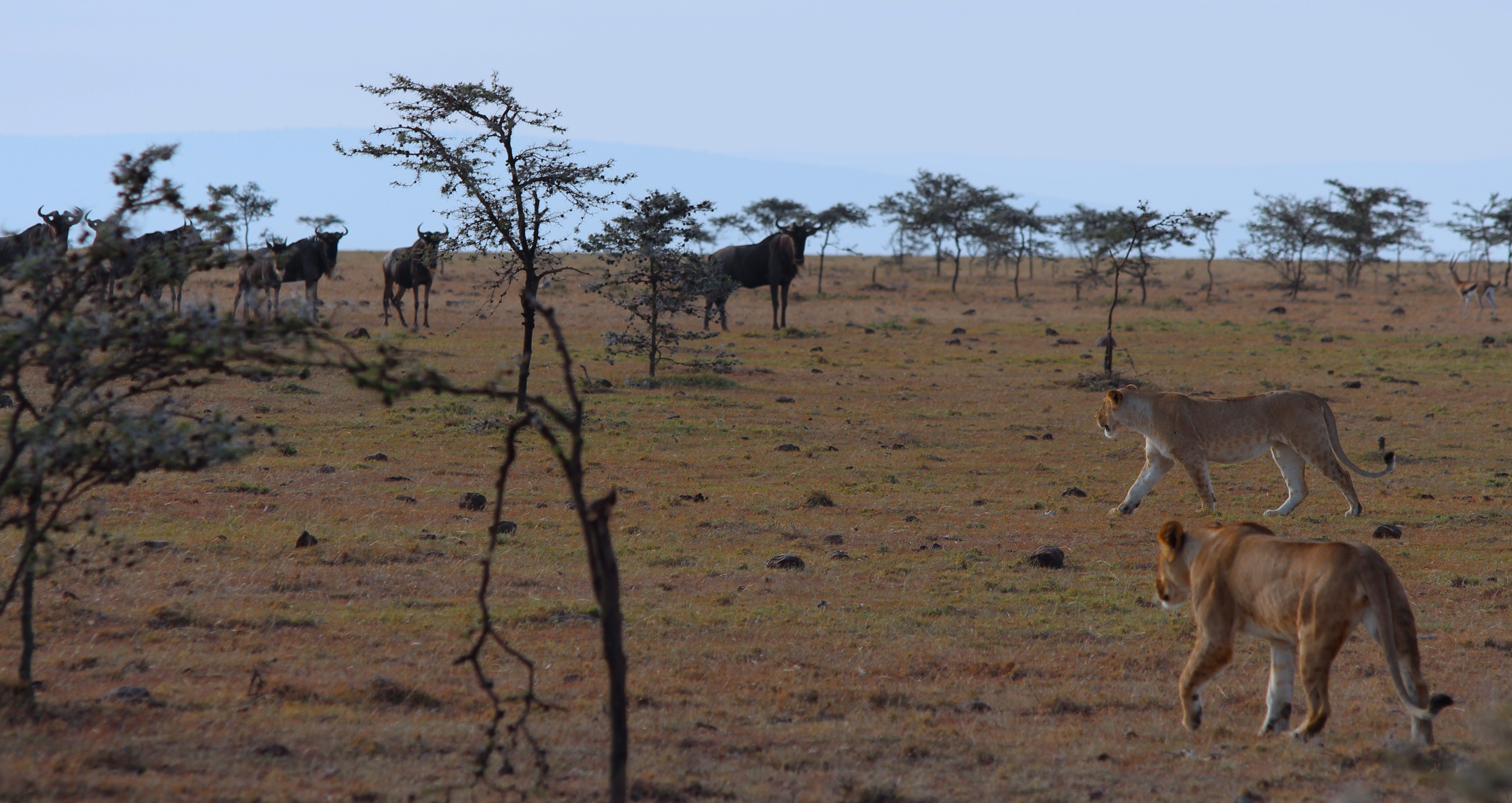
Lions thinking about chasing some wildebeest – a virtual buffet in the Maasai Mara (photo: Tammie Matson)
Namibia’s Skeleton Coast – Himbas, desert elephants & dunes!
20-27 May 2016.
Only one spot left for a single female!! Check out my photos from this year’s trip to Namibia.
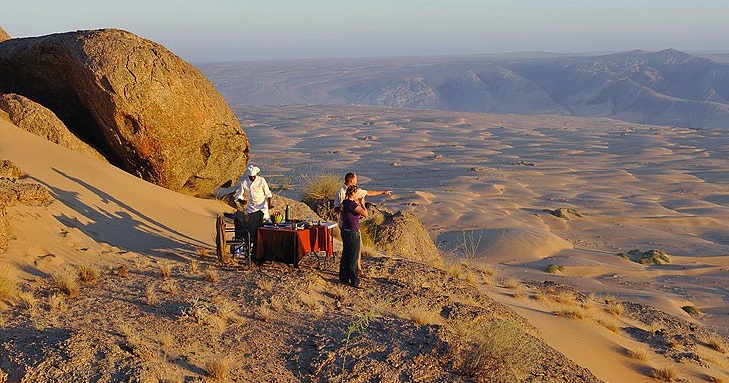
North West Namibia – one of the greatest wilderness areas left in Africa (photo: Wilderness Safaris)
Zimbabwe – Hwange, Mana Pools and Victoria Falls!
23-30 September 2016.
Only 3 spots left! This trip is different to the one I advertised previously as it focuses only on northern Zimbabwe. We are going to some of the most wildlife rich areas in Africa – an unbeatable nature experience at some of the most gorgeous camps in the country. Contact me for the itinerary.
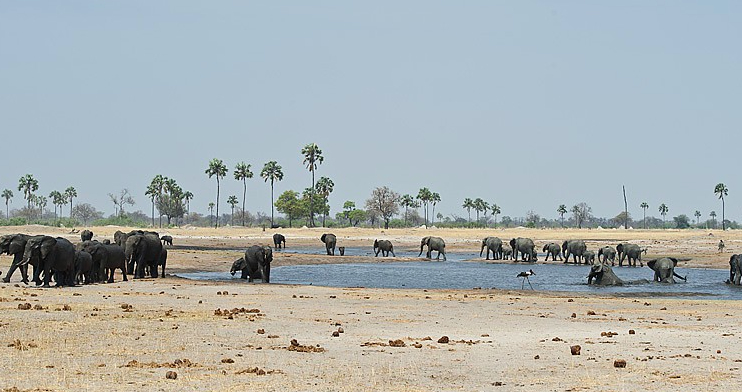
Elephants congregate in abundance in Hwange National Park, Zimbabwe – one of my favourite parks in Africa (photo: Wilderness Safaris)
My 2017 Safaris
Shortly I’ll be releasing the details of the conservation safaris I’ll be leading in 2017. I can share at this stage that there will be two back-to-back ethical safaris that you can join either one of or both during August 2017. The first, starting on 8 August 2017, will be to Rwanda to experience the incredible Mountain Gorillas up close and personal. The second starting 5 days later, is in Tanzania, exploring the great plains of East Africa’s Great Rift Valley, first at Ngorogoro Crater and then onto the world famous Serengeti, during the height of the wildebeest migration. There will be an add-on adventure at the foothills of Mount Kilimanjaro for those who are keen to continue the journey after the Serengeti! Full details of both of these adventures will be in a blog very soon, but do drop me a line if you’re keen to register your interest…
Price reduction for Kenya & special deals on Botswana!!
Kenya and Botswana are two of the most amazing wildlife destinations in Africa, but they do come at a price. If you’ve always wanted to travel to these countries, you can save a lot of money by going in the green season.
Today I can announce a great saving on my Kenyan safari from 20-27 February next year. I’m taking a small, intimate group of adventurers with me to the world famous Maasai Mara in Kenya, following a visit to the wonderful elephant orphanage run by Dame Daphne Sheldrick in Nairobi, staying in the best areas in communal conservancies that directly benefit local Maasai communities. I still have a few spots left and I’m offering them at a reduced rate if you get in quick!
Price now reduced to US$5000/per person sharing!! Contact me now for the full itinerary. This saving is only valid for the next two weeks til 6th November, so get in quick for this special last minute rate!

Our group watches an exhausted male lion (in between a week of mating every twenty minutes) – photo taken on my group safari July 2015
Check out my photos from the Maasai Mara in July here – it’s spectacular! Our trip in February is during the green season which is just beautiful and full of baby animals….
And there are some great deals going in the Okavango Delta if you can travel between January and April next year. Consider going on a 6 night safari at prime Wilderness Safaris explorations camps in this world heritage area for just US$3,499/person sharing (valid for travel between Jan-April, set dates). This is a great saving in one of the most wildlife-rich parts of Africa, and much less expensive than going in peak season. But availability won’t last so get in touch quickly if you’re interested.
For information on special deals in Botswana or to sign up for my Kenyan safari in February at the reduced rate, get in touch with me now!
Why Elephants Matter
One of the most enjoyable things I get to do as a zoologist is talk to kids about elephants. Kids give you instant feedback. There are no inhibitions, just a whole lot of questions, and when it comes to elephants, frankly, kids just get it. You don’t have to convince children to appreciate and want to conserve animals. They simply don’t understand why you wouldn’t want to. I get questions like, “Why don’t people do something else to get money other than kill elephants?”, “Why don’t we just leave the elephants to be in the wild?”, and “Why do people buy ivory instead of some other kind of jewellery?” All brilliant, simple questions that make you wonder why we grown ups are such damned idiots. The kids of today will inherit the legacy of our action – or inaction – and we need to remember that.
What happens to us as we grow up? Do we forget how much we loved animals as kids? Other things become more important, and the magic of the animal world becomes secondary to earning a living, buying the latest iPhone and upgrading the family car. I’m not criticising. As a mother of two, I know how tough it is to make ends meet and raise a young family. But every so often, I’m lucky enough to get a reality check by the young people who attend my talks on elephants, who remind me, as my own kids often do, what’s really important.
Many people don’t understand why elephants are so vital to conserve, why they’re considered a ‘keystone’ species in ecosystems. It’s not only because they are naturally the ‘gardeners’ of the forests and savannahs, having a major role in shaping habitats, they are also integral in dispersing and germinating seeds, and providing other animals with food and water and salt. A recent study also showed reptile and frog diversity is higher in areas with high elephant activity. They matter ecologically. Their dung is like pure rich fertiliser and is a great food source in itself for many animals (because much of what they eat is undigested). The habitats elephants live in would look completely different without them there. And of course, there is the intrinsic value of elephants. What would the world be without them? The deserve to be here as much as we do!
I’ve just returned from a whirlwind week of talks on elephants in Singapore and Melbourne where the importance of conserving elephants has been a key topic. I combined the Round Square Conference (hosted by United World College, Singapore) for 1000+ high school kids and their teachers from all around the world, with about 400 passionate Aussies marching at the Global March for Elephants and Rhinos in Melbourne, and snuck in a session talking elephants at the Singapore Botanical Gardens and a showing of the LEBE film at the University of Melbourne (hosted by A Future With Elephants) while I was at it. Here’s a few photos showing the highlights.
Special thanks to Belinda Duffield-Torr who helped fund my visit to Melbourne and organised the Melbourne March, Susan Edwards and the amazing team from UWC who arranged for me to be one of the speakers at the Round Square conference, Mandy Heng, Vilma d’Rozario and Winnie Wong who made my talk at the Singapore Botanical Gardens happen, and Evan Bitner for organising the film showing by A Future With Elephants. Thanks to everyone who showed up and added their two bobs worth to the discussions!
One of the most inspiring things of the week for me was when two small boys, aged 7 and 9, presented me with a cheque for our LEBE campaign. Sammy, the younger of the two, had been to my talk on elephants at his school, UWC in Singapore, about a year ago, and had been so inspired to help that he raised $500 among his family and friends! This is the sort of thing that makes me believe that wildlife has a future in the world and it just goes to show that anyone can do something for wildlife. You don’t need to be a pro!
If you’re interested in having me as a speaker about elephants at your school/business/club, please get in touch with me here.

With the fabulous elephant warrior, 14 year old Alice Bertram, who joined me as a speaker at the Melbourne March For Elephants and Rhinos on 4th October
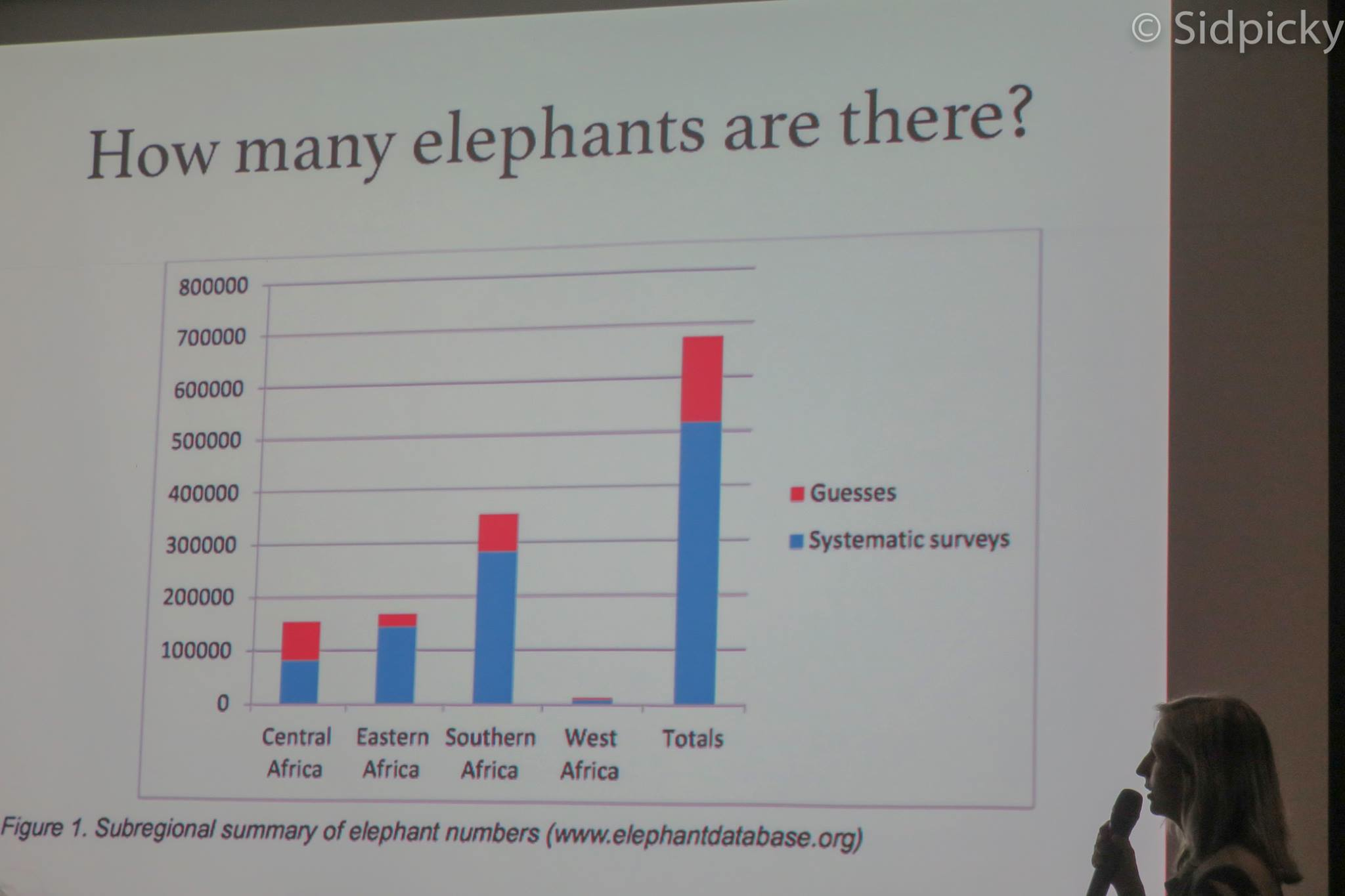
How many elephants are there in Africa? Photo credit to Sidpicky (thanks Sid!) from my talk at the Botanical Gardens in Singapore
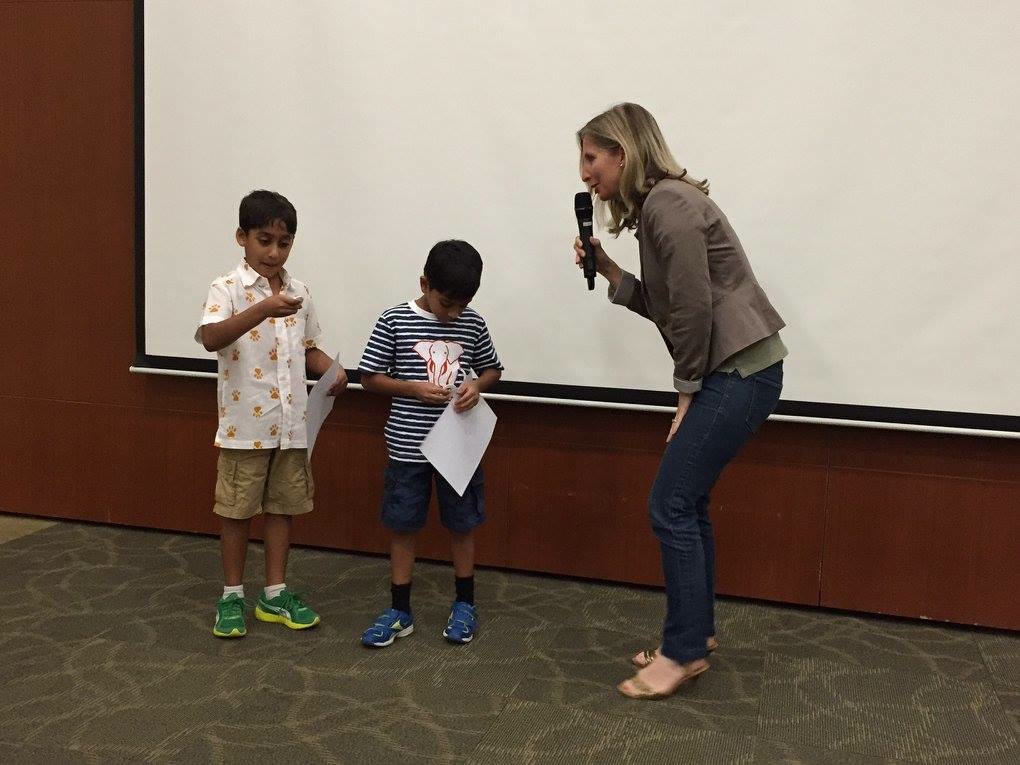
Sammy (right) and his brother Vijay, with me after my talk in Singapore. These boys are real conservationists in the making!
Big News in the Elephant World
In the world of elephants, it’s not often that you see conservationists celebrating. President Xi Jinping of China’s announcement on Friday last week that China will join the USA in enacting near total bans on domestic ivory trade is… I think… worth cracking the bubbly over. We don’t entirely know the detail yet, and there is no timeline, other than what was in the White House’s statement, which includes agreement between China and the USA to work together in “joint training, technical exchanges, information sharing and public education”. But this could be a winning combination.
It will of course take some time to see the effects of these Presidents’ commitments, but this is definitely a big step in the right direction and with President Xi Jinping publicly declaring his support, surely this should make it a priority for Chinese policy. This is most significant because China is the world’s largest consumer country for ivory, representing about 70% of the trade, with the USA coming in second. With these two Presidents clearly stating their position that ivory trade will not be tolerated, this sets a precedent that other countries can now follow. Other south east Asian countries like Malaysia, Vietnam, Philippines, Singapore, Hong Kong and Thailand, also play key roles in the illegal trade, either as consumers or transit countries for illegal ivory.
In the last year or so we’ve seen several big players in the ivory trade undertake ivory stockpile crushings (the governments of the Philippines, Hong Kong, the US and China being a few). While this doesn’t really do anything to stop the trade, it does send a strong message that these governments are committed to ending the bloody illegal ivory trade.
Is the world turning a corner when it comes to ivory trade? Is the whirlwind of awareness raising starting to cut through in key consumer and transit countries for ivory? And most importantly, how long will it take for this to make a difference for elephants? Personally, I won’t be really celebrating until we start to see real population trends for elephants in the wild start to improve, and that’s certainly not happening yet. It was only a very short time ago that both Mozambique and Tanzania reported that at least half of their elephant populations have been poached in the last 5 years. Today, I feel cautiously optimistic, but we do need to keep the momentum up.
As I’m about to fly to Singapore and Melbourne for a week of talks on elephants, I’ve been investigating what the Singapore and Australian governments are doing to stop illegal ivory trade. In May this year, Singapore Customs seized their biggest illegal haul in over a decade, including $6 million worth of ivory. But we have yet to see any significant government ivory-related statements from either Singapore or Australia. When I met with Singaporean authorities last year to discuss this issue, I was informed that the Lion City would be crushing its official ivory stockpile shortly, but I haven’t heard anything since. In addition, with the strong influence that both southern hemisphere powerhouses have over other countries in Asia, particularly those that are struggling to get on top of this problem, I think both countries could do more to help this problem by exerting their influence in the region. It’d be great to see support from the governments of Australia and Singapore for countries like the Philippines and Thailand, to help them in the fight against illegal wildlife trade.
We know from the latest CITES report that the level of poaching of elephants is still unsustainable (and has been since 2008) – see the graph below. Anything above the red line is unsustainable (measured against natural population growth rates).
So elephants are far from being out of the woods. However, in addition to last Friday’s announcement from the White House, what also gives me some hope is that Wild Aid is starting to demonstrate some significant results from their Public Service Announcements in China, featuring the likes of David Beckham, Prince William and Chinese basketball player, Yao Ming, for both ivory and rhino horn. Wild Aid’s assessments suggest that awareness of this issue in China is improving (comparing 2012 to 2014), with a 51% increase in people surveyed realising that poaching is a problem and 90% of those who had seen the PSAs saying they would not buy ivory as a result. Read the report here.
Around the world on Sunday 4th October, hundreds of thousands of elephant- and rhino-lovers will congregate at the March For Elephants and Rhinos in 130+ cities. I’ll be marching and speaking at the Melbourne one, which has over 500 people coming. Melbourne residents can sign up to the march on Facebook. Anyone can sign the petition put together by the March organisers to encourage the Australian government to go further – click here to sign.
For those who want to learn more about the illegal ivory trade, please also come to watch the ‘Let Elephants Be Elephants‘ film and hear the latest from me on elephants the day before in Melbourne (this Saturday at 11am). You can RSVP here (where there are also full details of time and venue on Saturday). Singaporeans can join my talk at the Botanical Gardens this Friday at 4pm (full details here). It’s never been so important to keep the momentum up and show the world that we care about elephants and rhinos and will not stand by while they perish on our watch. Let’s all stand together and encourage all governments to follow the lead of China and the USA and commit to ending the illegal ivory trade!


